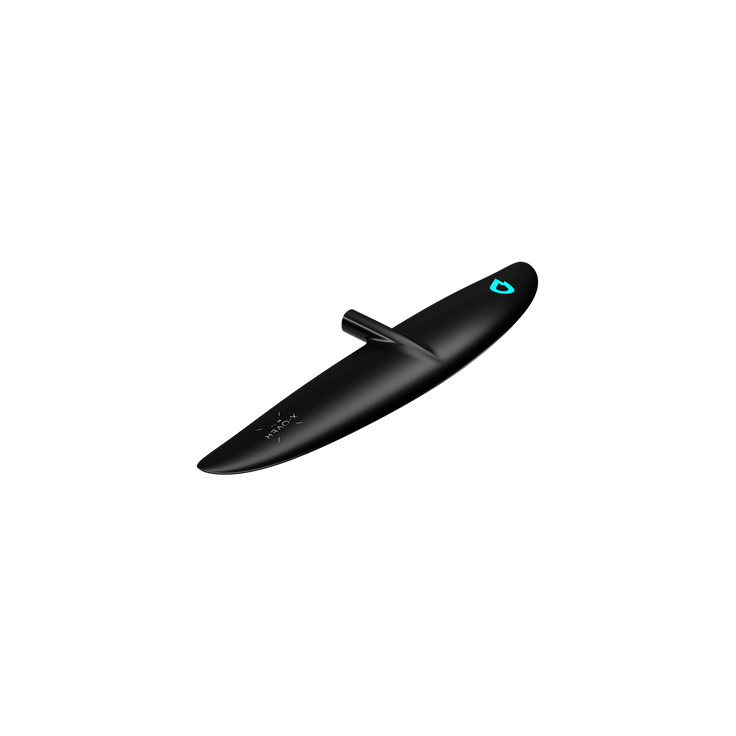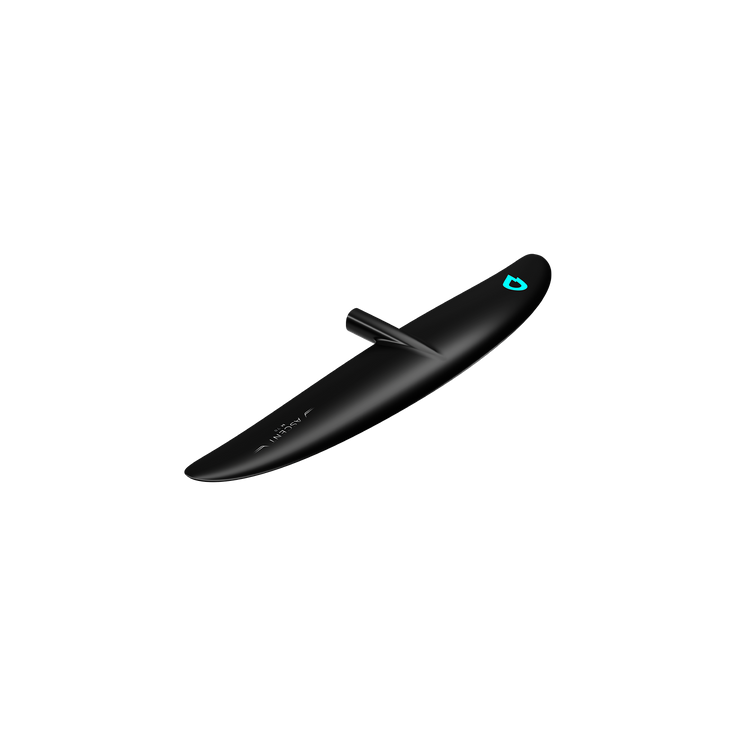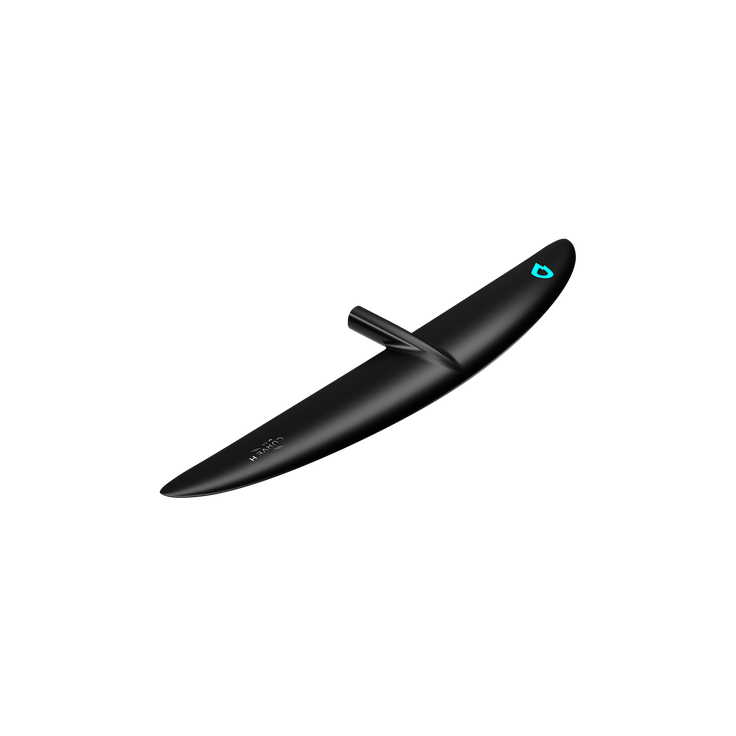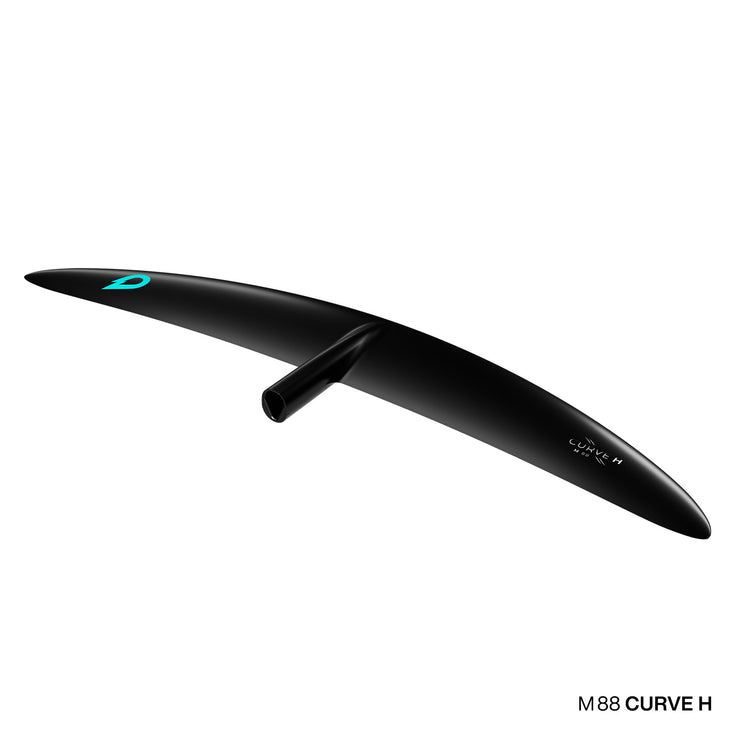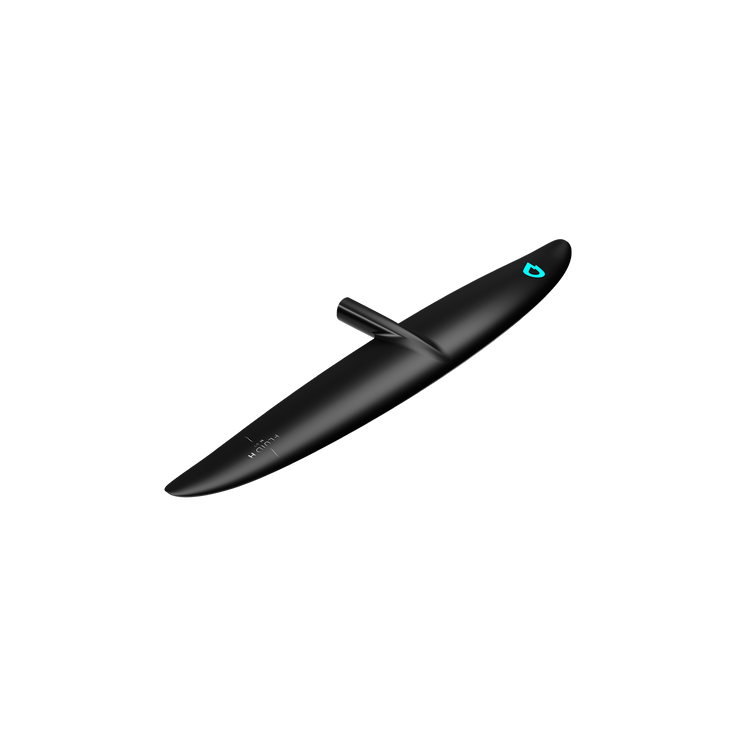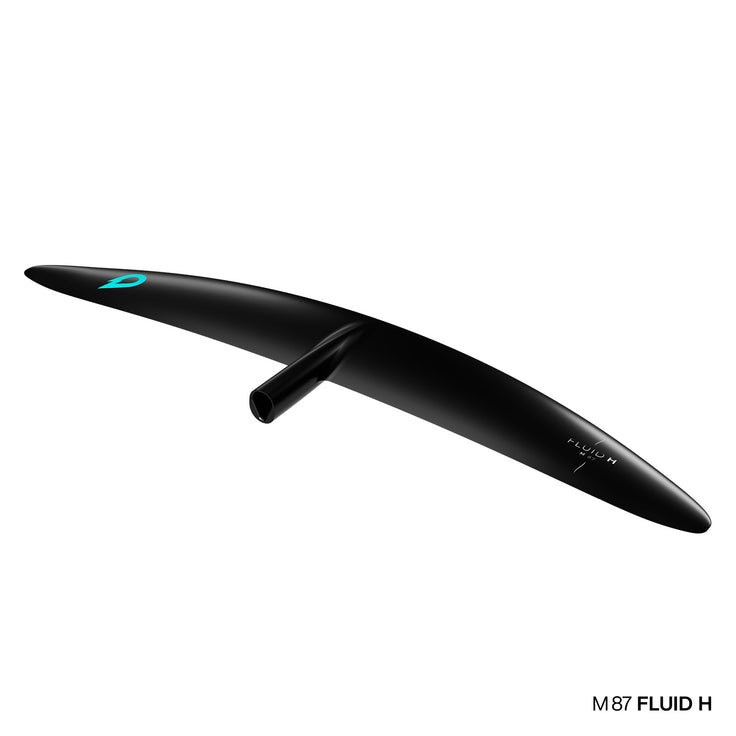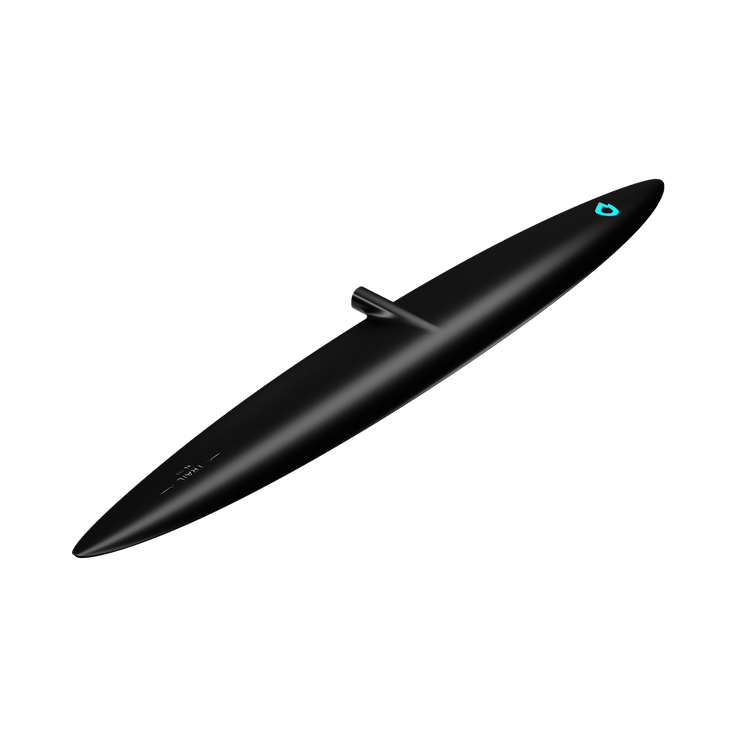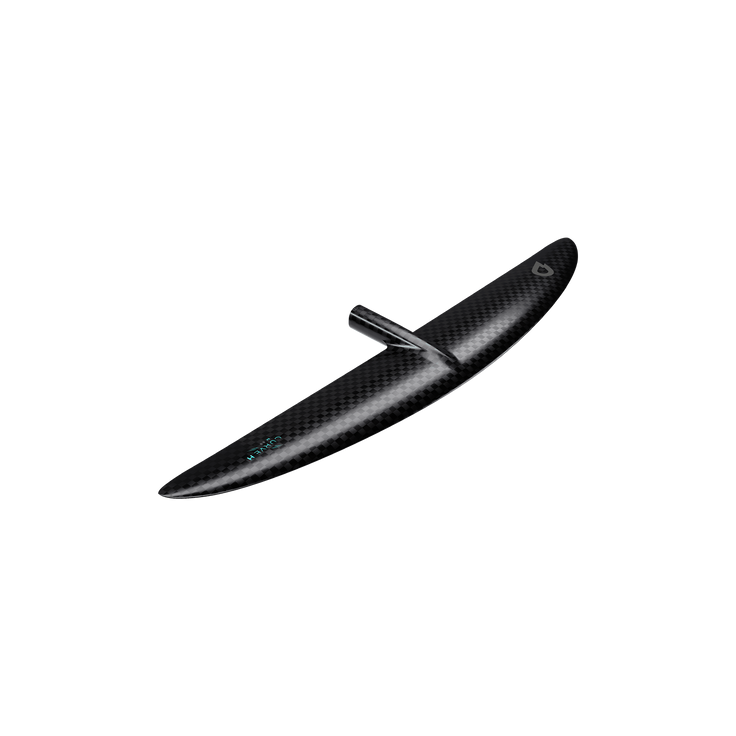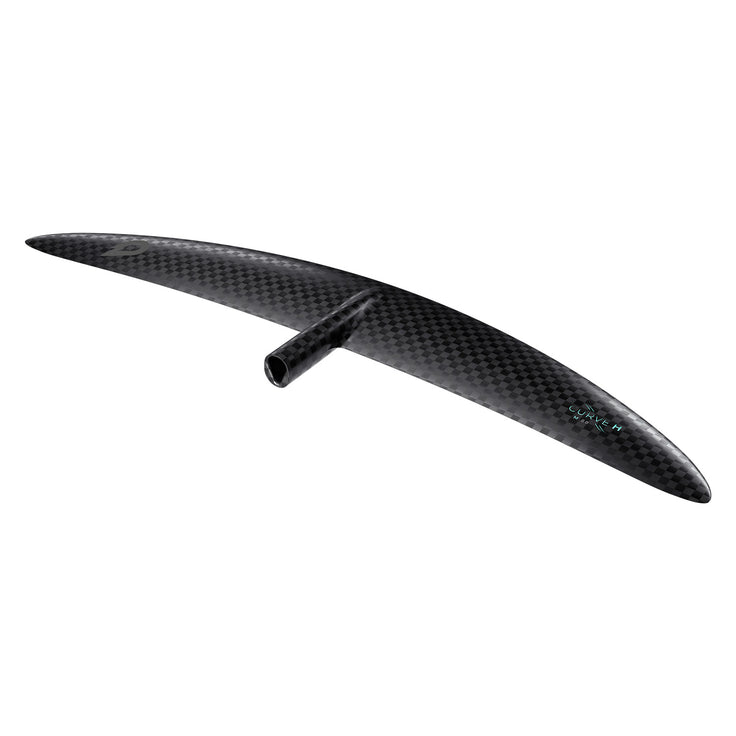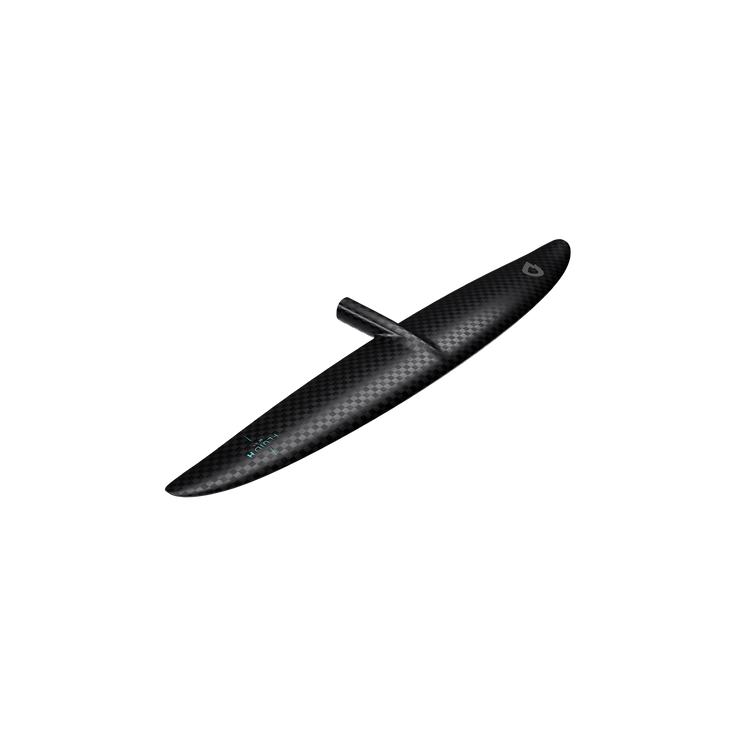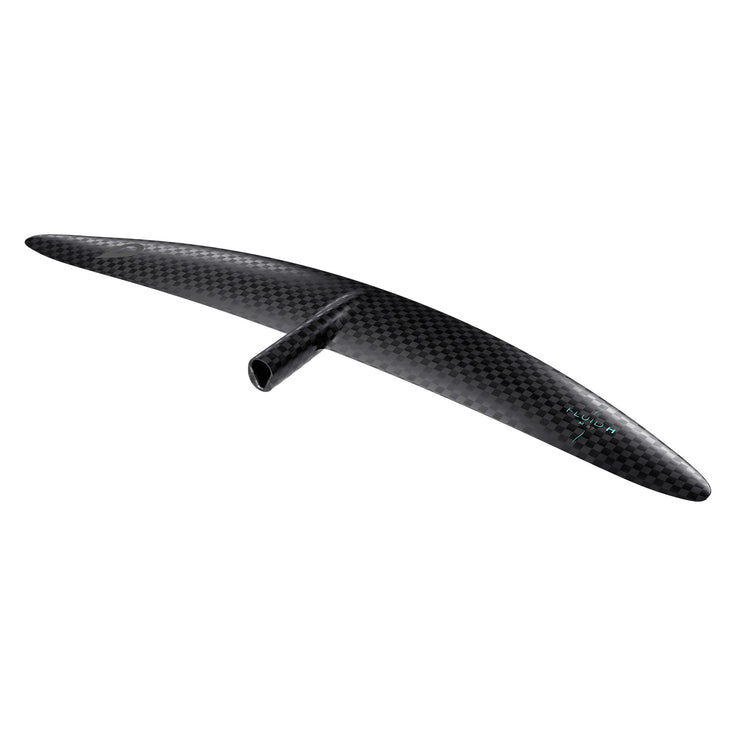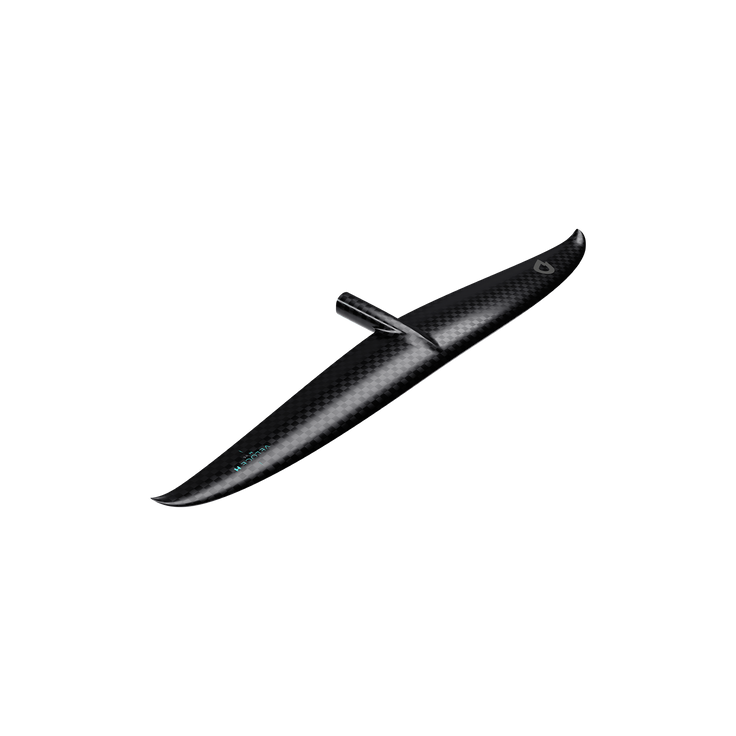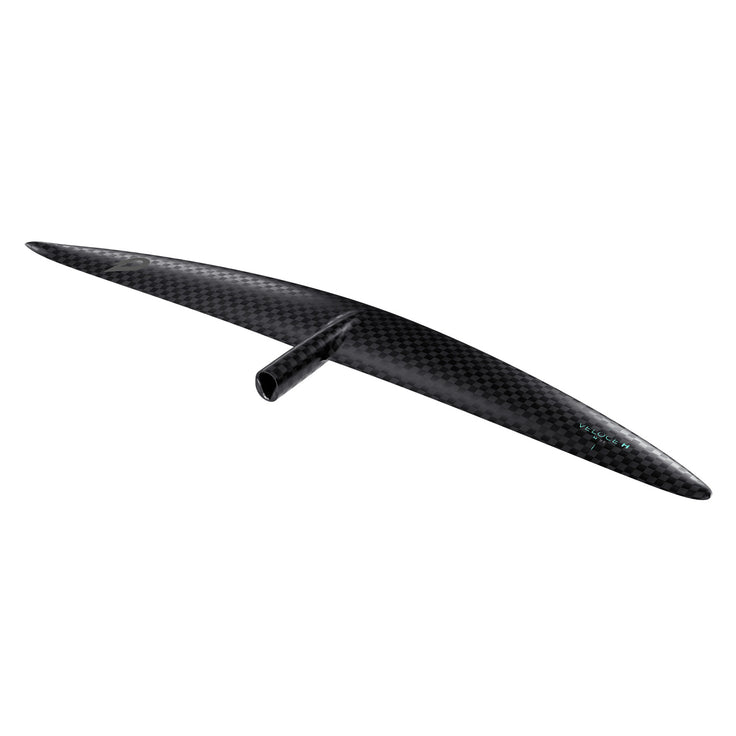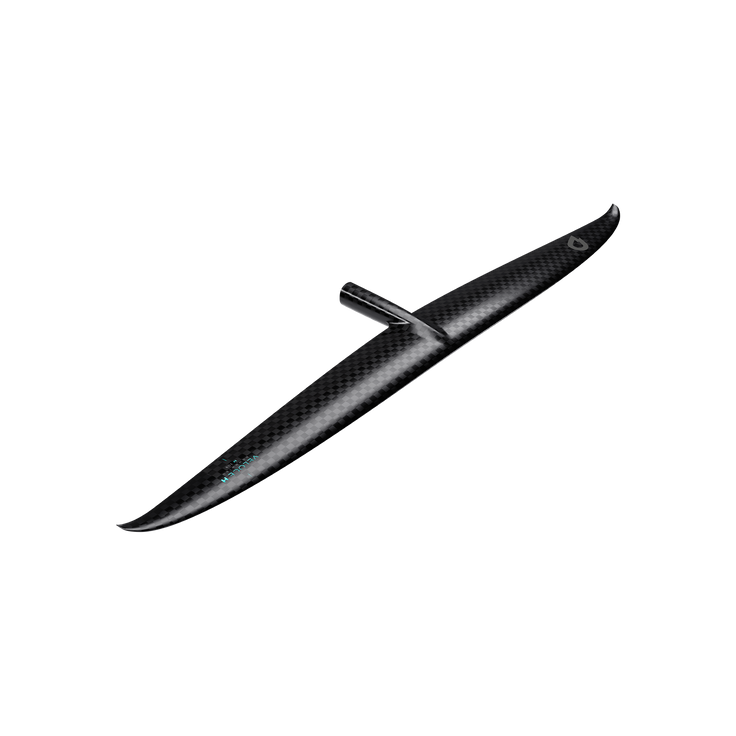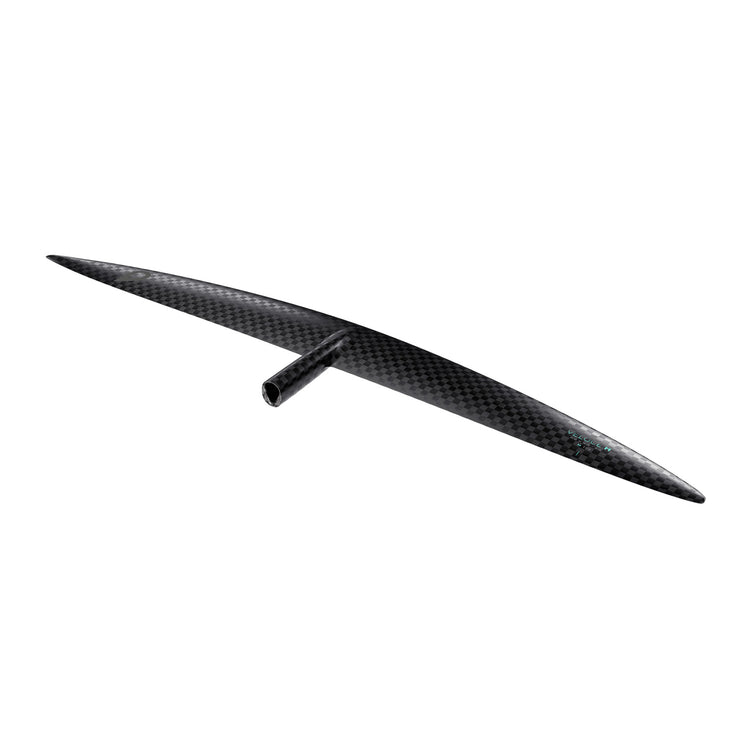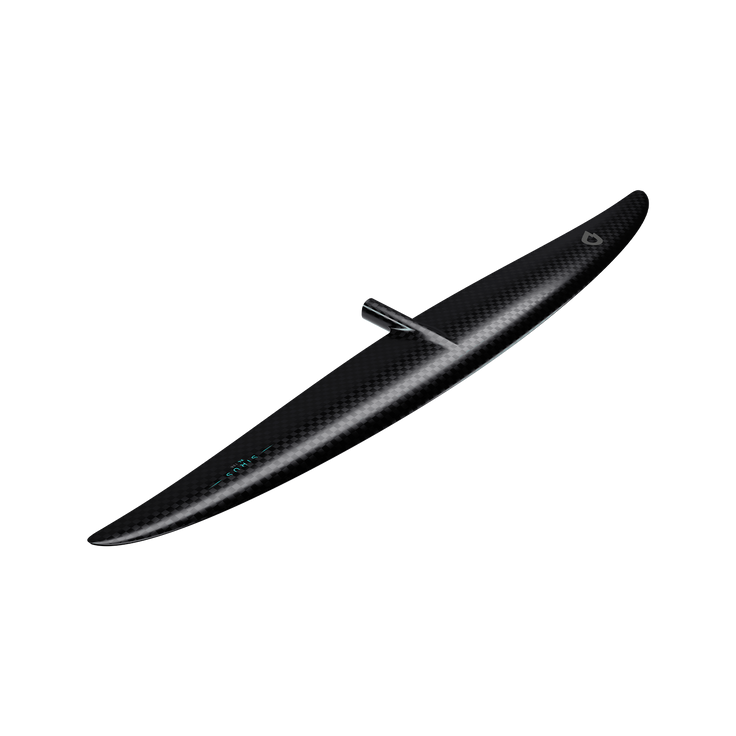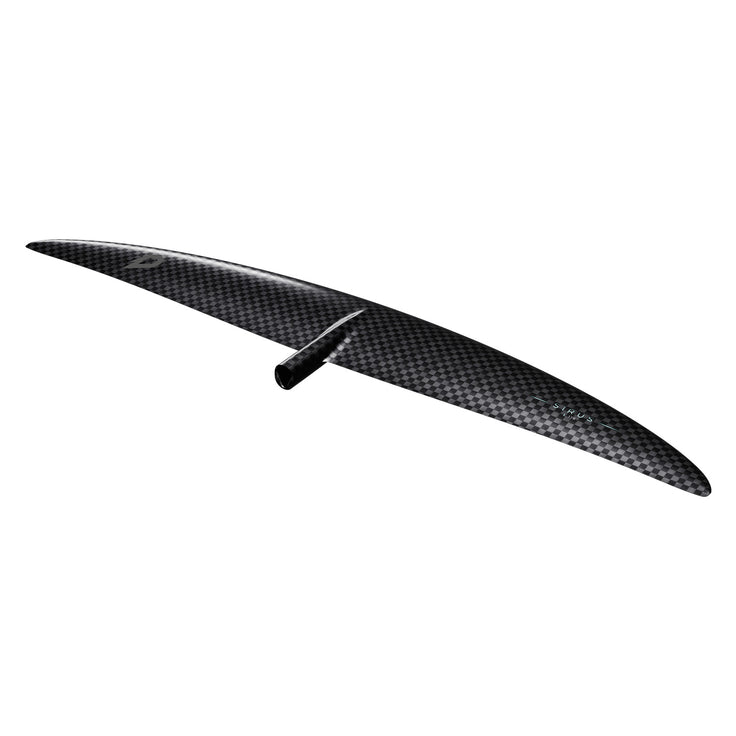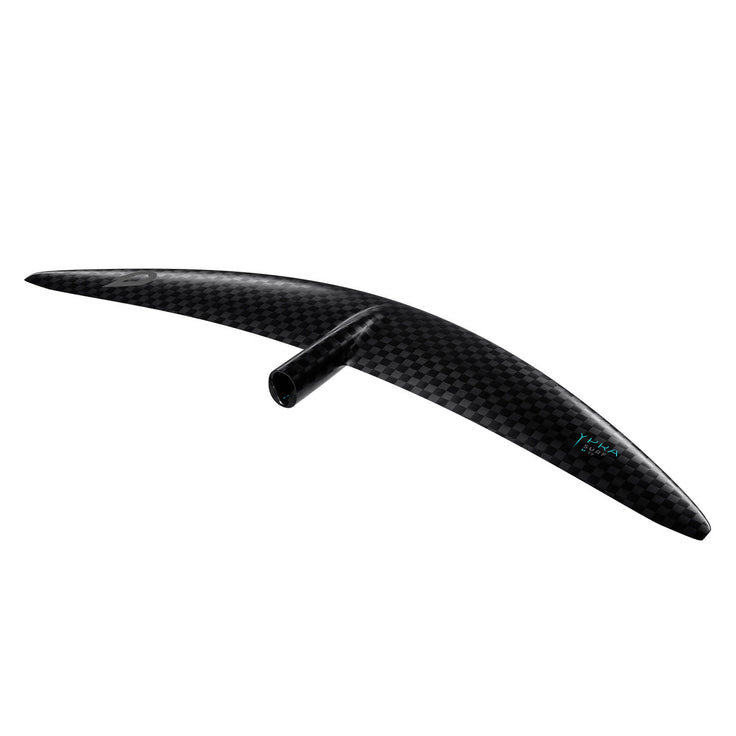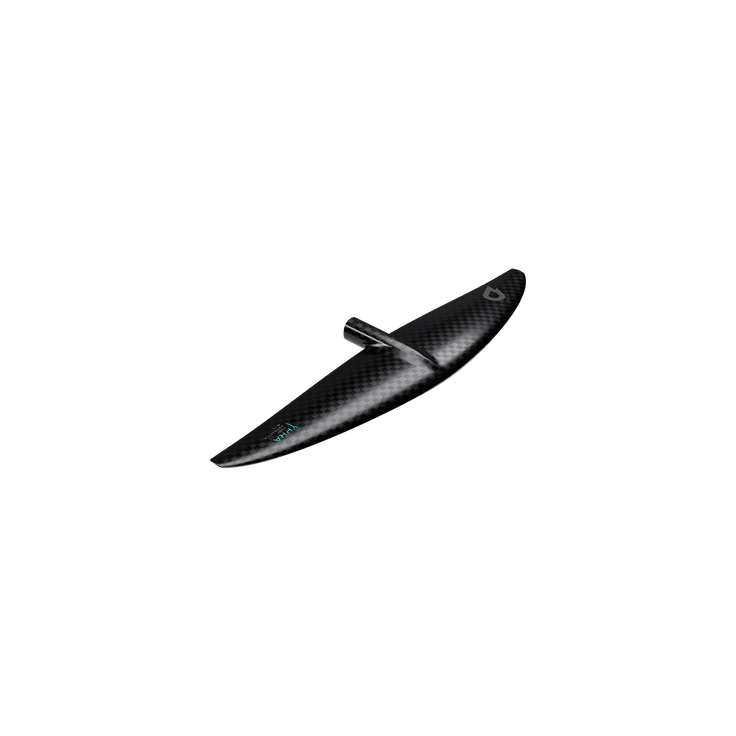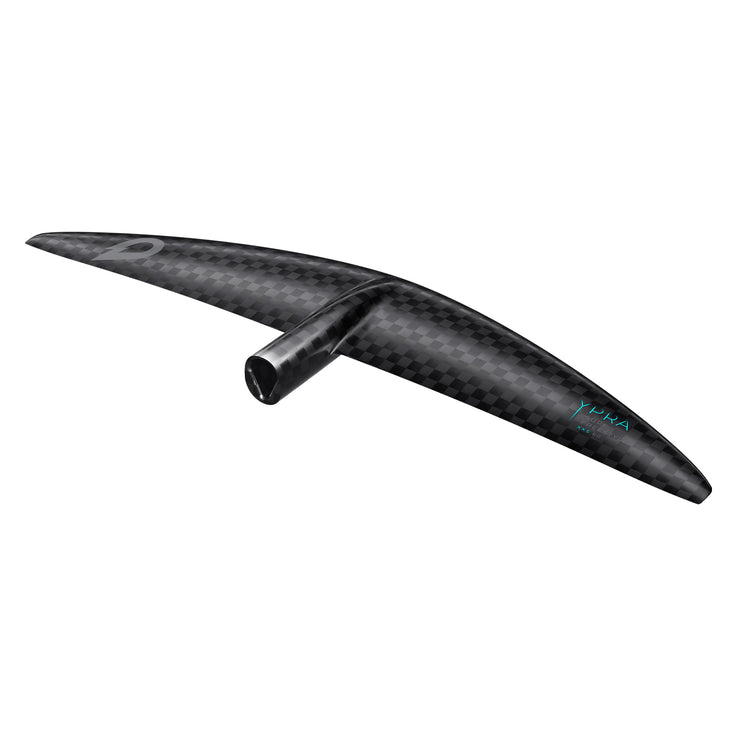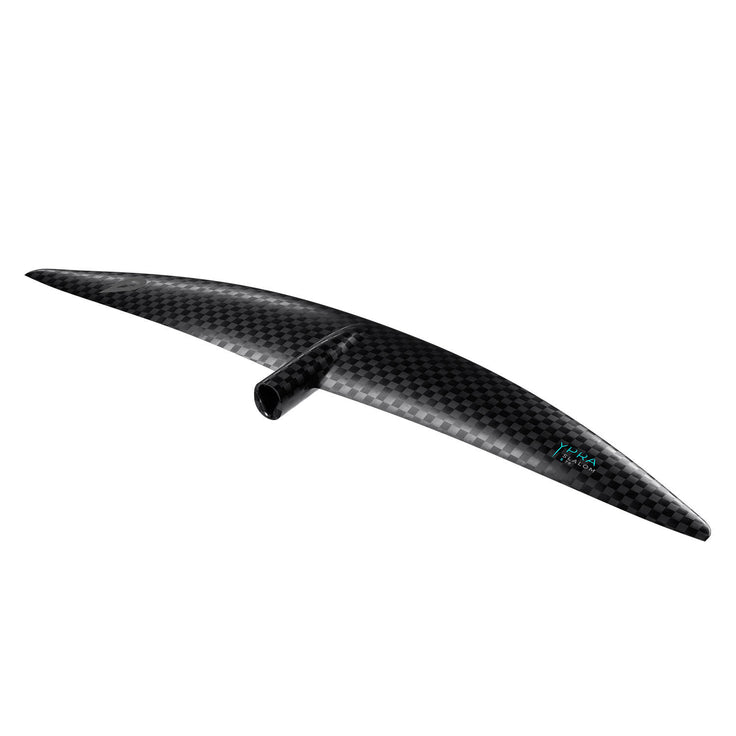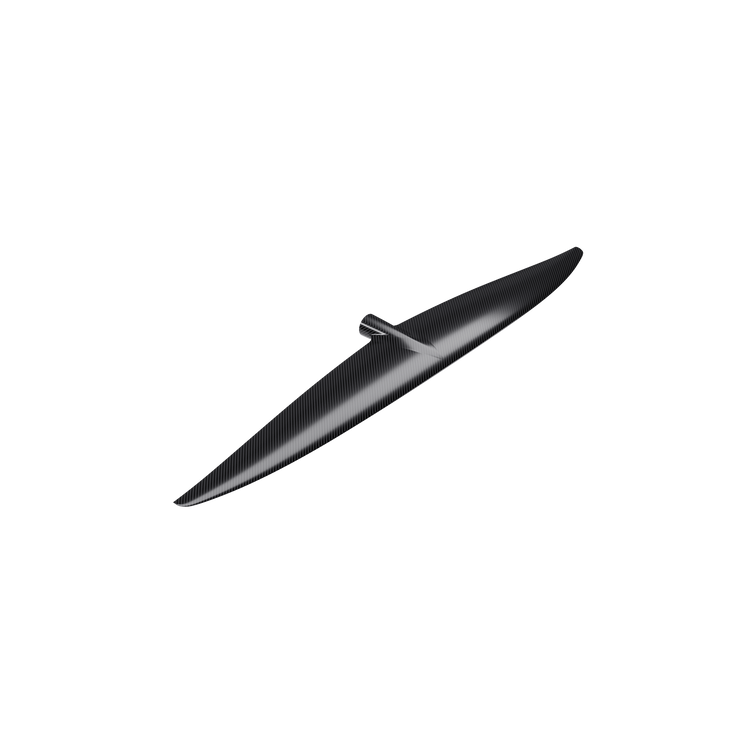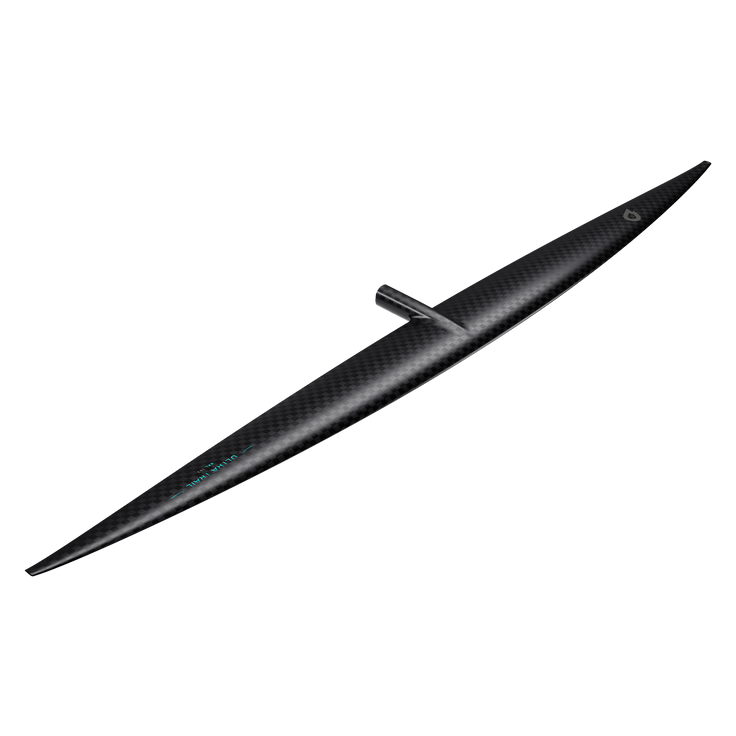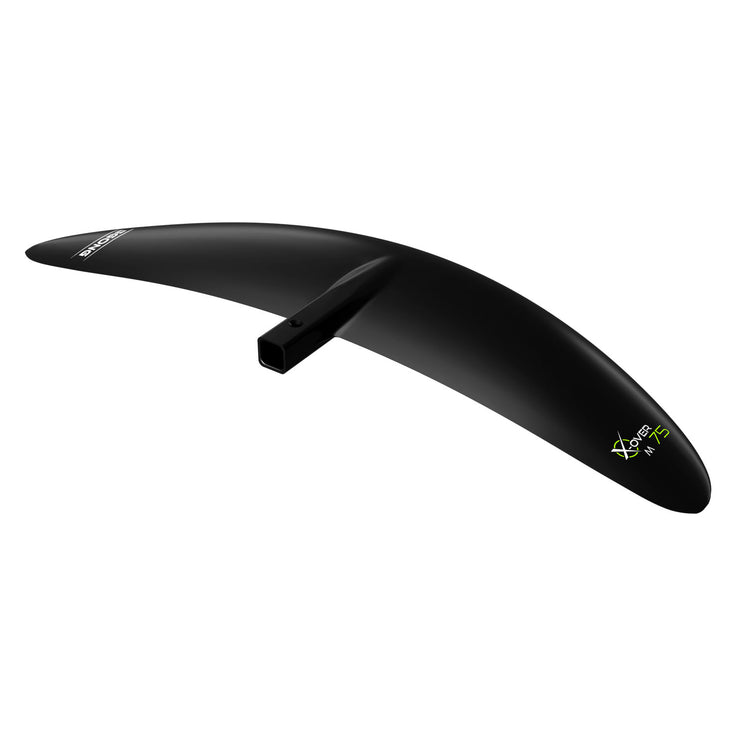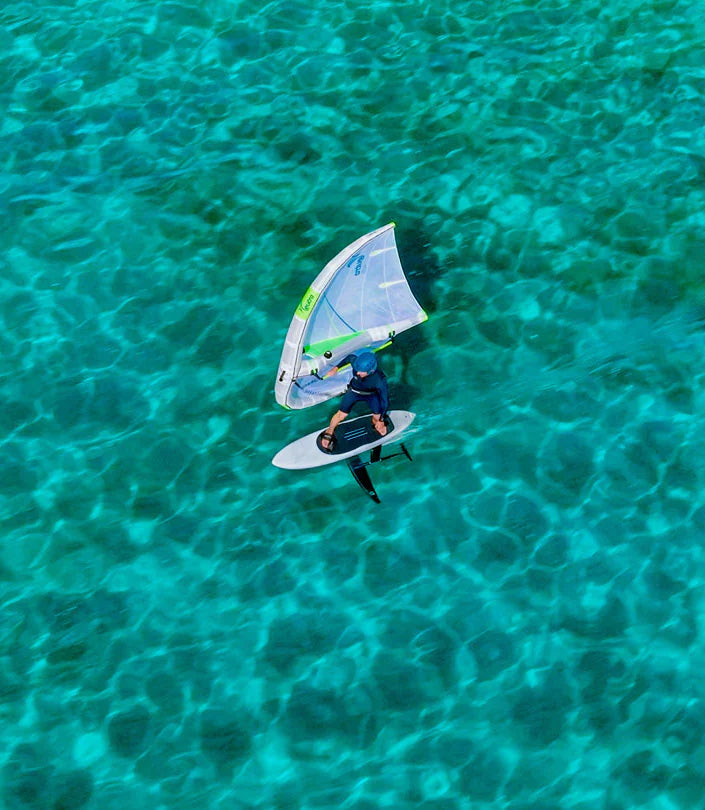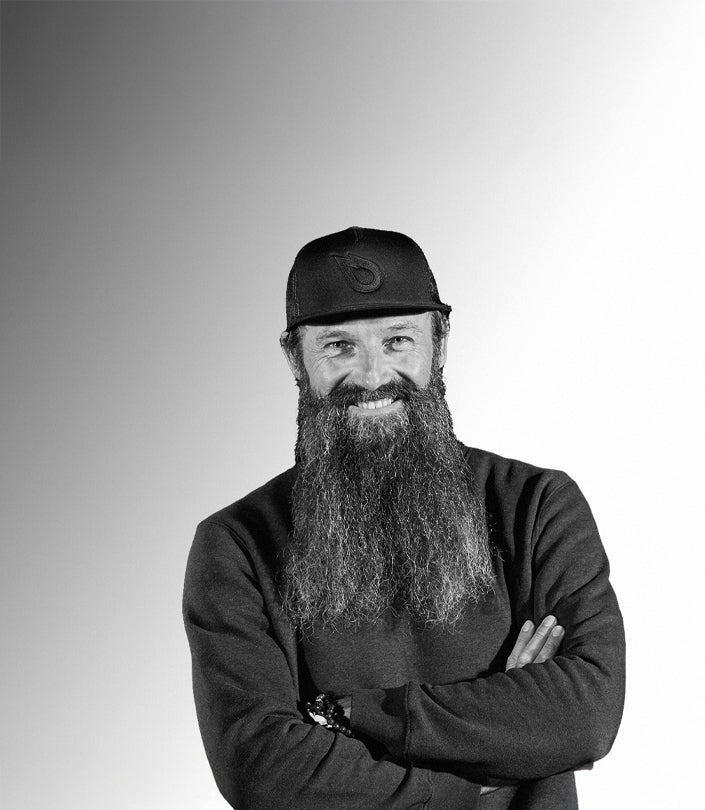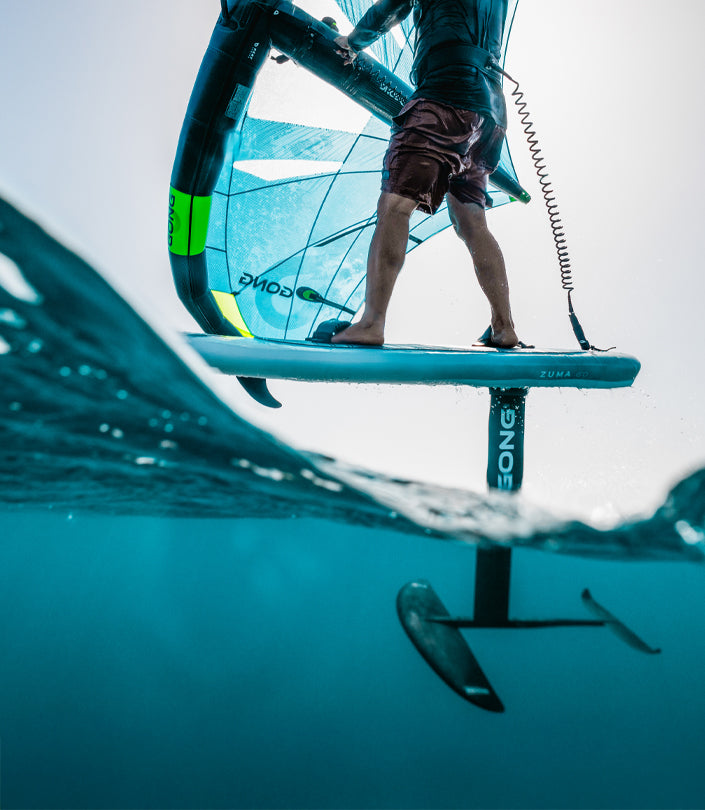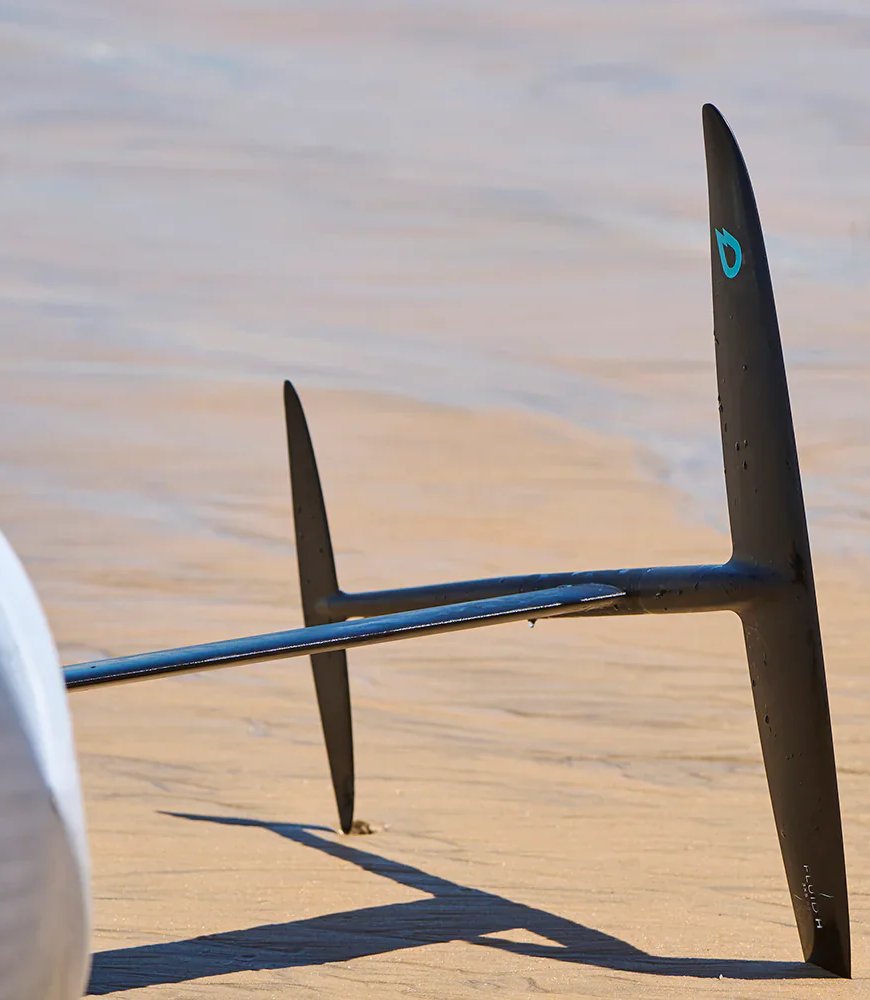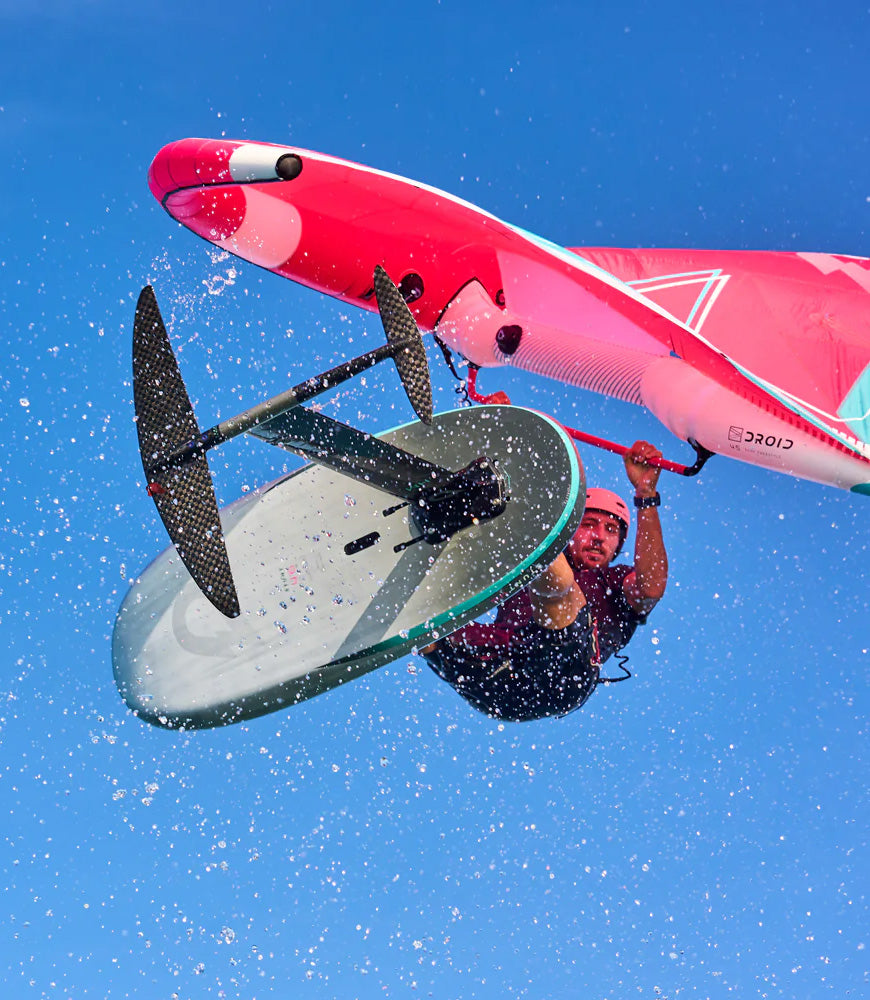Foil spare parts
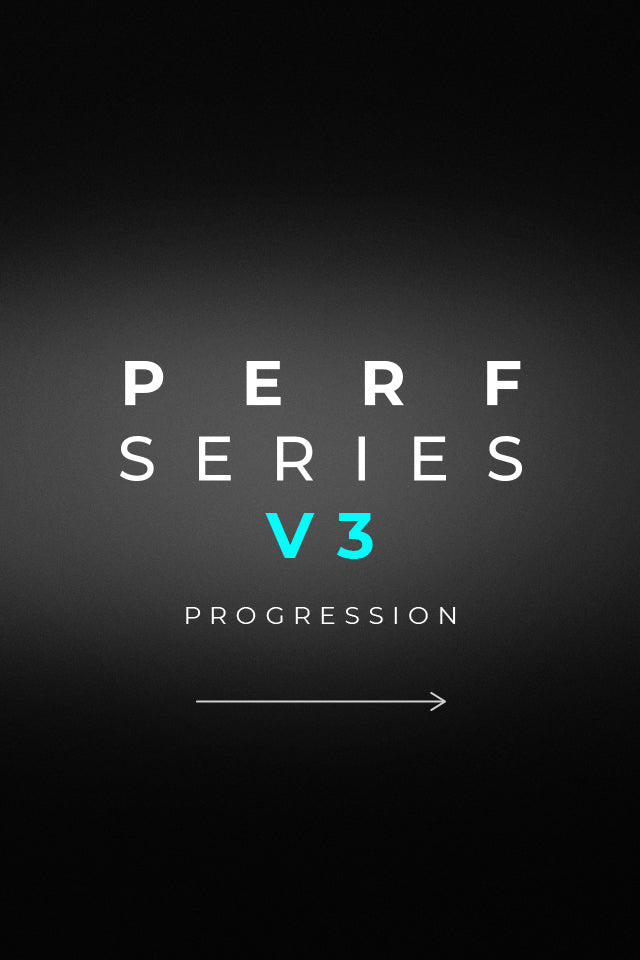
Foil Front Wing X-Over V3
Foil Front Wing Ascent V3
Foil Front Wing Curve H V3 FG
Foil Front Wing Fluid H V3 FG
Foil Front Wing Trail V3
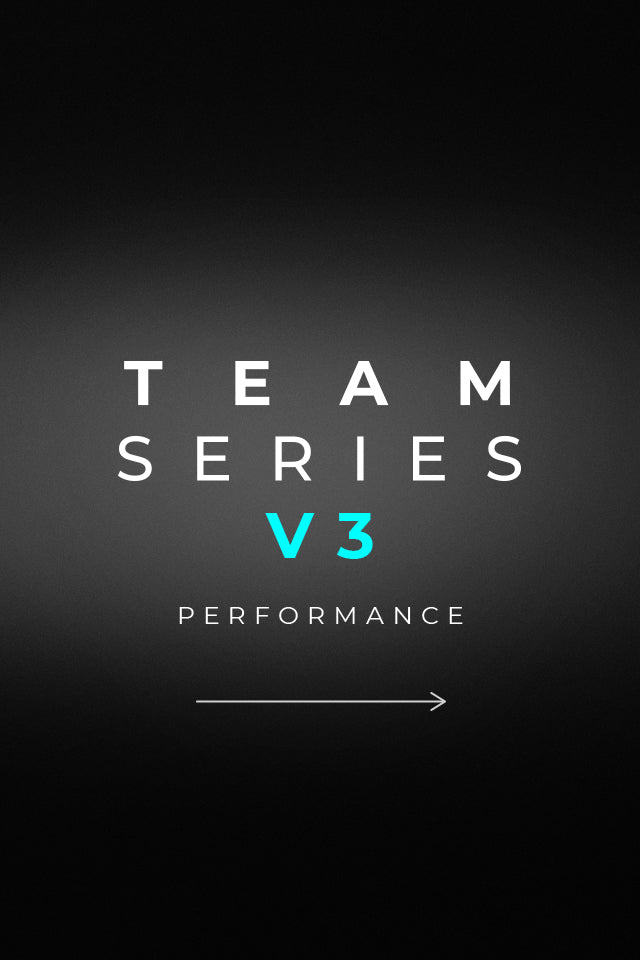
Foil Front Wing Curve H V3
Foil Front Wing Fluid H V3
Foil Front Wing Veloce H V3
Foil Front Wing Veloce HDW V3
Foil Front Wing Sirus V3
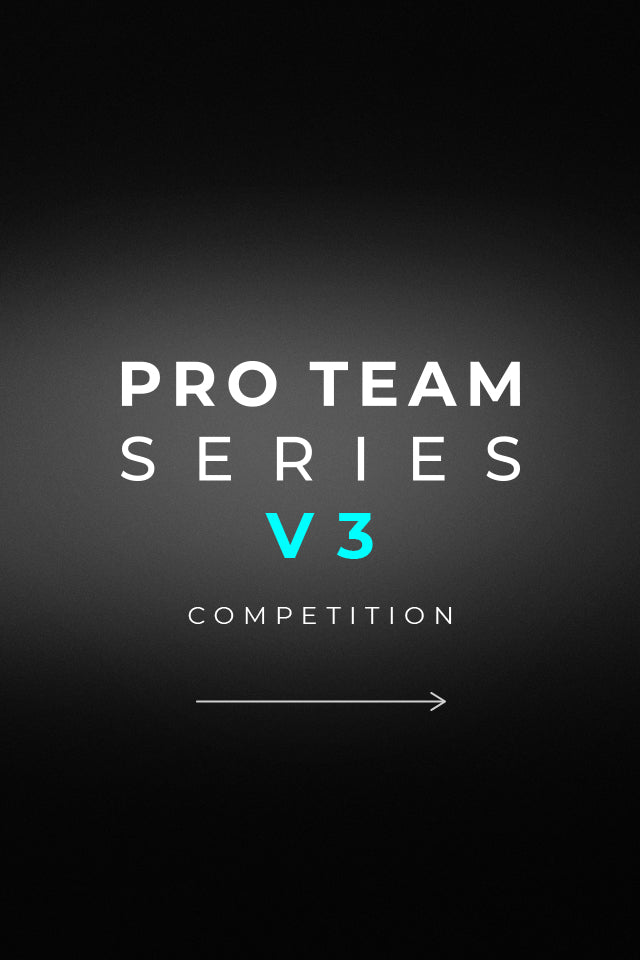
Foil Front Wing Ypra Surf V3
Foil Front Wing Ypra Surf-Freestyle V3
Foil Front Wing Ypra Slalom V3
Foil Front Wing Ypra Race V3
Foil Front Wing Ultra Trail V3
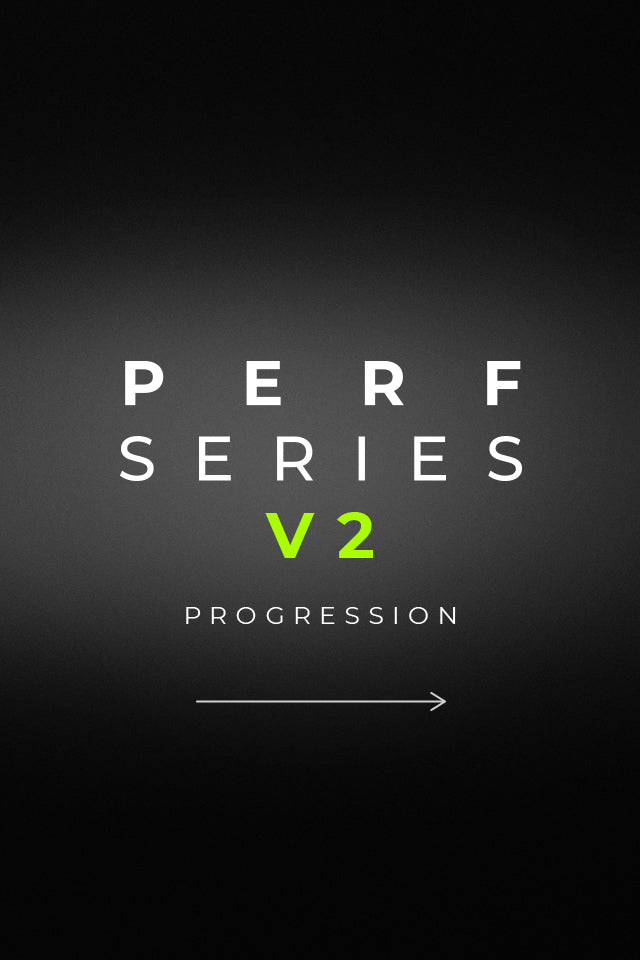
Foil Front Wing X-Over V2
Introduction to the V3 foil range
General overview:
This new V3 range, designed by a team of engineers, hydrodynamics experts, and more, delivers significant improvements in both glide performance and assembly mechanics. We pursued performance down to the finest details while retaining what made the GONG V2 foils the best-selling foils in the world.
Advantages of the V3 foils:
- Enhanced Glide: The redesigned shape reduces water resistance, making it easier to reach and maintain speed for an astonishing glide sensation.
- Increased Lift: The profiles of the V3 front wings provide better lift, offering greater efficiency with less effort and drag, as well as more responsiveness and precision.
- Rigidity and Stability: The new fuselage design, with its ovoid section, enhances the rigidity of the assembly by 30%, thereby improving stability even at high speeds.
- Ease of Assembly: Thanks to a self-locking interlocking system, assembling the wings and stabilizer becomes simple and fast. The fit is precise and secure, without the need for constant retightening.
What sets these foils apart:
- Effortless Glide Capability: Optimized profiles enable continuous glide with minimal energy, even in very light wind or foam.
- Optimized Performance: They offer superior efficiency in terms of lift and glide. The combination of these two parameters at their peak delivers unparalleled performance.
- Adaptability to All Practices: The V3 range is designed to adapt to a wide variety of navigation styles, from freeride to surfing, racing, downwind, surf foiling, and freestyle. Each foil in the range excels in its specific domain while remaining versatile for other programs.
Why choose the GONG V3 range?
- Performance: The improvements made to the V3 foil profiles deliver measurable performance gains ranging from 12% on the Curve to 40% on the Veloce!
- Sensations: Every design detail has been crafted to optimize glide, lift, and maneuverability, offering an unparalleled navigation experience.
- Simplicity: The new assembly system allows for easy and secure adjustments, eliminating the need for retightening during a session. With fewer screws and a hassle-free assembly/disassembly process, you can focus entirely on the joy of gliding for a seamless experience.

The genesis of the V3 foil range
Development Overview:
- Listening to and Learning from Riders: GONG worked closely with its team of professional riders and, most importantly, tens of thousands of GONG foil users worldwide. This collaboration helped identify areas for improvement in the V2 range, leading to a V3 that addresses real-world needs on the water.
- Testing and Continuous Improvement: Every V3 prototype was tested under varied conditions and by all types of riders to fine-tune the design of the wings, stabilizers, and fuselages.
- Design, Testing, and Digital Optimization: The V3 foils are the result of thousands of digitally tested iterations by our hydrodynamics experts and engineers. The creation of this center of excellence, made possible by our ongoing development, ensures optimization down to the finest detail.
- Inspiration from Previous Versions: The V3 retains the strengths of the world-champion V2, while introducing significant adjustments such as the transition to an ovoid fuselage, improved profiles, better fittings, and refined curves, among others.
- The World’s Largest Foil Factory: Every GONG foil is produced in our own factory. This exclusive, massive facility allows us to develop cutting-edge technologies ahead of their time.
Goals of the V3 Range:
- Deliver ultra-high-performance foils tailored to each discipline.
- Provide absolute tolerance and a stable, dependable feel, even in turbulence.
- Maximize lift to enable the use of smaller, more responsive, and faster surfaces.
- Simplify assembly, enhance rigidity, and reduce drag.
- Push composite rigidity and durability to the limit for superior performance.
Changes compared to V2:
- Transition from a square fuselage to an ovoid section: improved hydrodynamics, 12% drag reduction.
- Constant profile on the front wings for uniform lift.
- Streamlined design for transitions between sections (fillets), making the foil smoother. Achieved a 50% drag reduction on the lower 10 cm of the masts!
Optimization of wing profiles:
- The constant profiles from the center to the tips on the V3 allow for maximum and consistent lift, providing better control on the surface when, for instance, a tip emerges, and offering excellent low-end performance.
- The wing design has been adjusted to reduce surface turbulence, making the foil quieter and significantly more stable.
- The alignment of the planes and profiles has significantly reduced the stabilizers' surface area, consequently reducing drag.
- The new profiles rise without generating pitching at low speeds. V3 foils take off flat, making them much easier to handle, particularly during re-engagements.
Impact on performance:
- Improved stability in turns, increased rigidity for tricks and fast runs.
- Excellent low-end range and highly stable behavior in complex situations: tip-out, high-speed stalls, re-pop, turbulent water, etc.
- Reduced drag enables easier glide and sustained speed over long distances without effort. Requires 200 cm² less on the front wing.
The qualities of the V3 foil range
Lightness:
- The weight of the foils has been significantly reduced (e.g., 40g less on the fuselage, 700g less on a Sirus), making transport easier and also improving responsiveness on the water.
Rigidity and durability:
- The new ovoid section of the fuselage improves rigidity by 30% compared to square versions. This ensures greater stability, especially at high speeds or during rapid transitions.
- The rounded design of the connections between flat surfaces reduces stress points, significantly increasing break resistance by 30%.
- Materials such as reinforced aluminum for the fuselage and carbon for the wings offer an excellent weight-to-rigidity ratio.
Glide and lift performance:
- Thanks to a constant profile on the front wings, lift is enhanced, allowing for a 200 cm² reduction in wing size while maintaining the same lift as a larger wing from the V2 version.
- The V3 wings are designed to minimize drag and maximize glide, a major focus of their development.
- V3 wings offer much greater tolerance, making flight easier even at low speeds. They no longer stall abruptly when approaching the surface or when a tip emerges.
The V3 front wings range
GONG V3 Perf Front Wings Range
Foils designed to help you progress quickly and effortlessly to an advanced level across all foil sports. These prepreg fiberglass wings are robust, durable, and economical.
Their design incorporates the latest innovations to make progression enjoyable. For example, their takeoff no longer induces pitching: these foils lift "flat" for an incredibly smooth experience. It's a game-changer for learning.
- Xover V3: Beginner and progression foil, stable and forgiving, offering great ease of learning and room for progression for riders new to foiling.
- Ascent V3: A versatile foil for rapid progression, suitable for riders with some prior experience in foiling or board sports. It combines performance, stability, and maneuverability for an "all-terrain" foil.
- Curve H FG V3: Designed for carving, with a moderate+ aspect ratio and excellent control in all conditions. Ideal for freeride and waves, offering tolerance and comfort.
- Fluid H FG V3: A radical surf foil with excellent glide and high reactivity, perfect for engaged surfing. It offers fantastic top speed and the ability to perform aggressive snaps and slashes.
- Trail: Pumping model for beginners, designed for rapid progression in pure pumping. Ideal for learning dock starts and flat starts with a glider foil that is forgiving and easy to use.
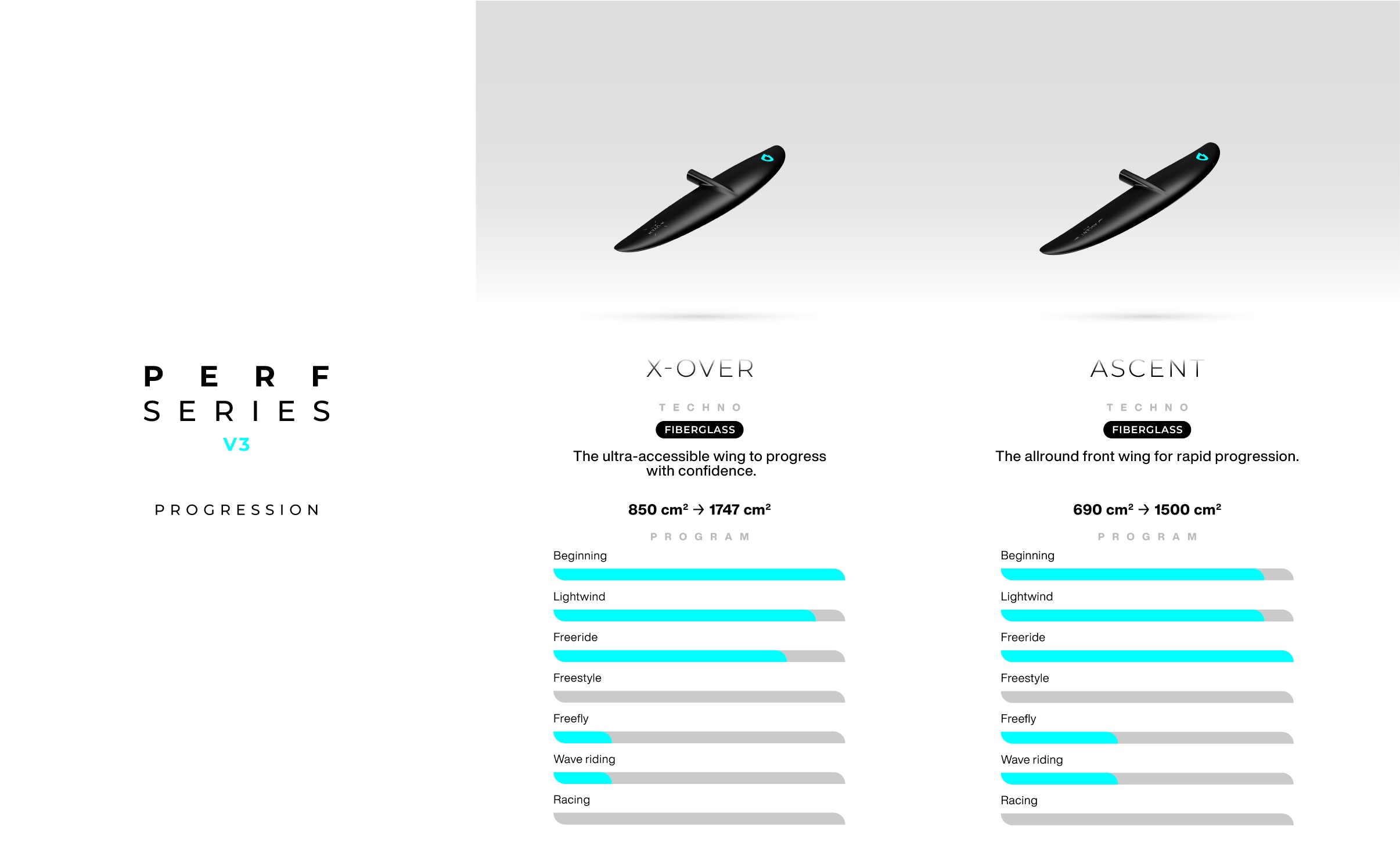
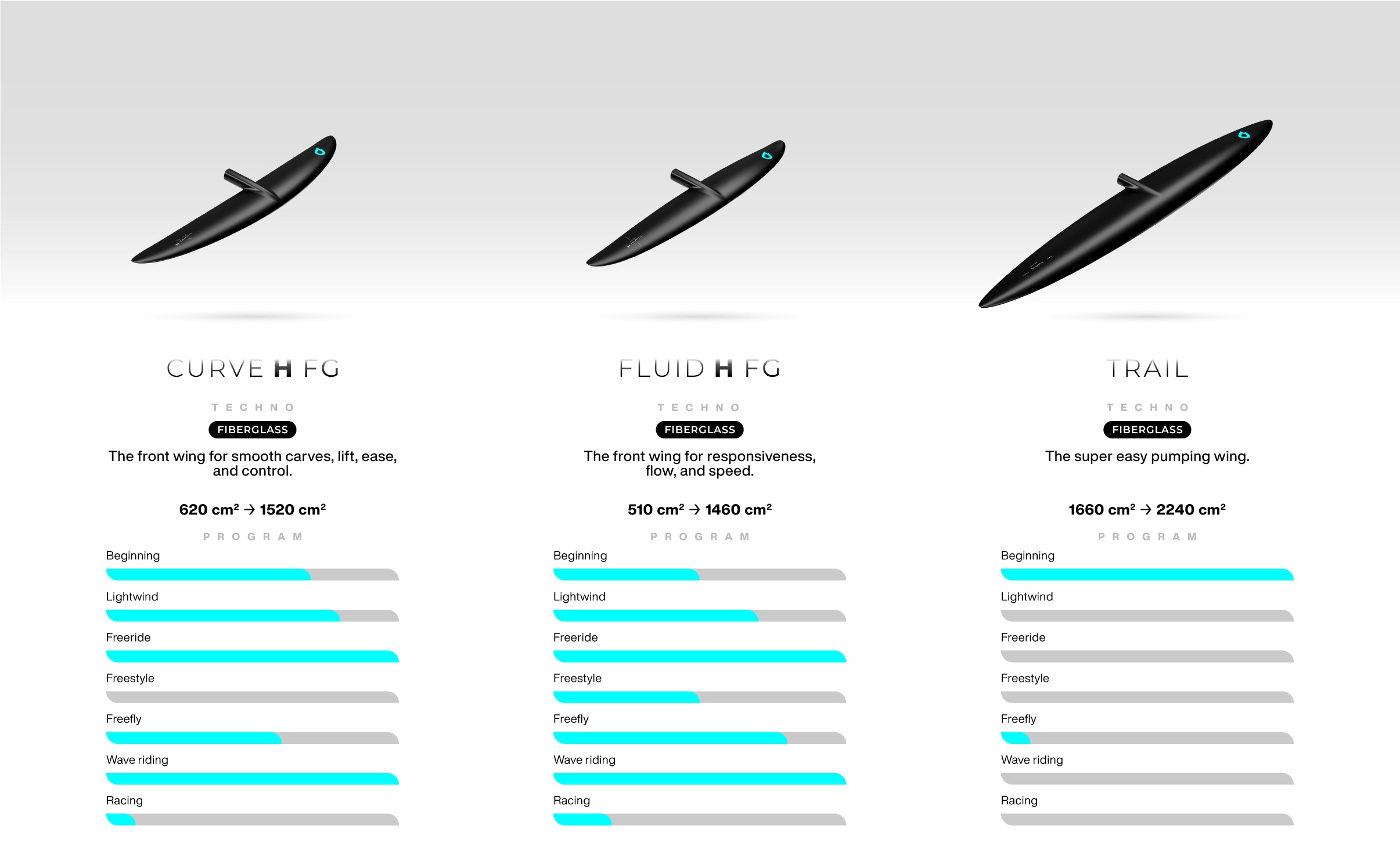
GONG V3 Team Front Wings Range
Simple foils that deliver top-tier performance. Combining high performance and comfort, this range is used by professionals but remains accessible to experienced foilers. These prepreg carbon wings are lightweight, durable, and extremely rigid.
- Curve H V3: Designed for carving, with a moderate+ aspect ratio and excellent control in all situations. Perfect for freeride and waves, offering tolerance and comfort.
- Fluid H V3: A radical surf foil with excellent glide and high reactivity, perfect for committed surfing. It delivers great top speed and the ability to execute aggressive snaps and slashes.
- Veloce H V3: Glide- and speed-oriented foil with a high aspect ratio, offering exceptional glide while maintaining good rail-to-rail maneuverability. Ideal for freefly, surfing, and light wind conditions.
- Veloce HDW V3: Downwind version of the Veloce, with an extreme aspect ratio for endless glide sessions: downwind, freefly, pumping, smooth surfing, light wind, etc. Extremely efficient with minimal effort.
- Sirus V3: High-lift foil, even at low speeds, designed for infinite pumping and light wind in marginal conditions. Its maneuverability in smaller sizes is perfect for smaller swells and slow bumps in downwind scenarios.
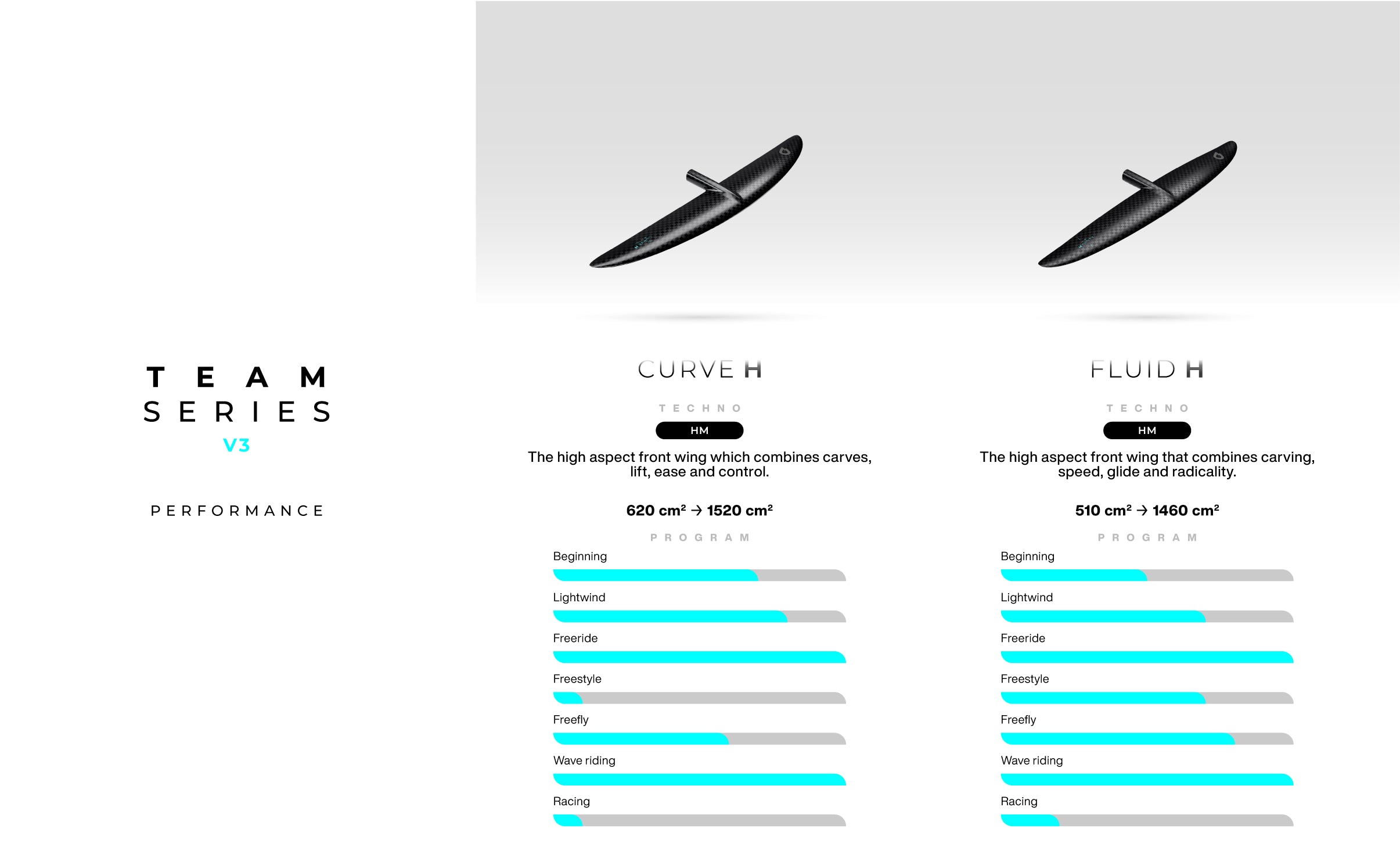
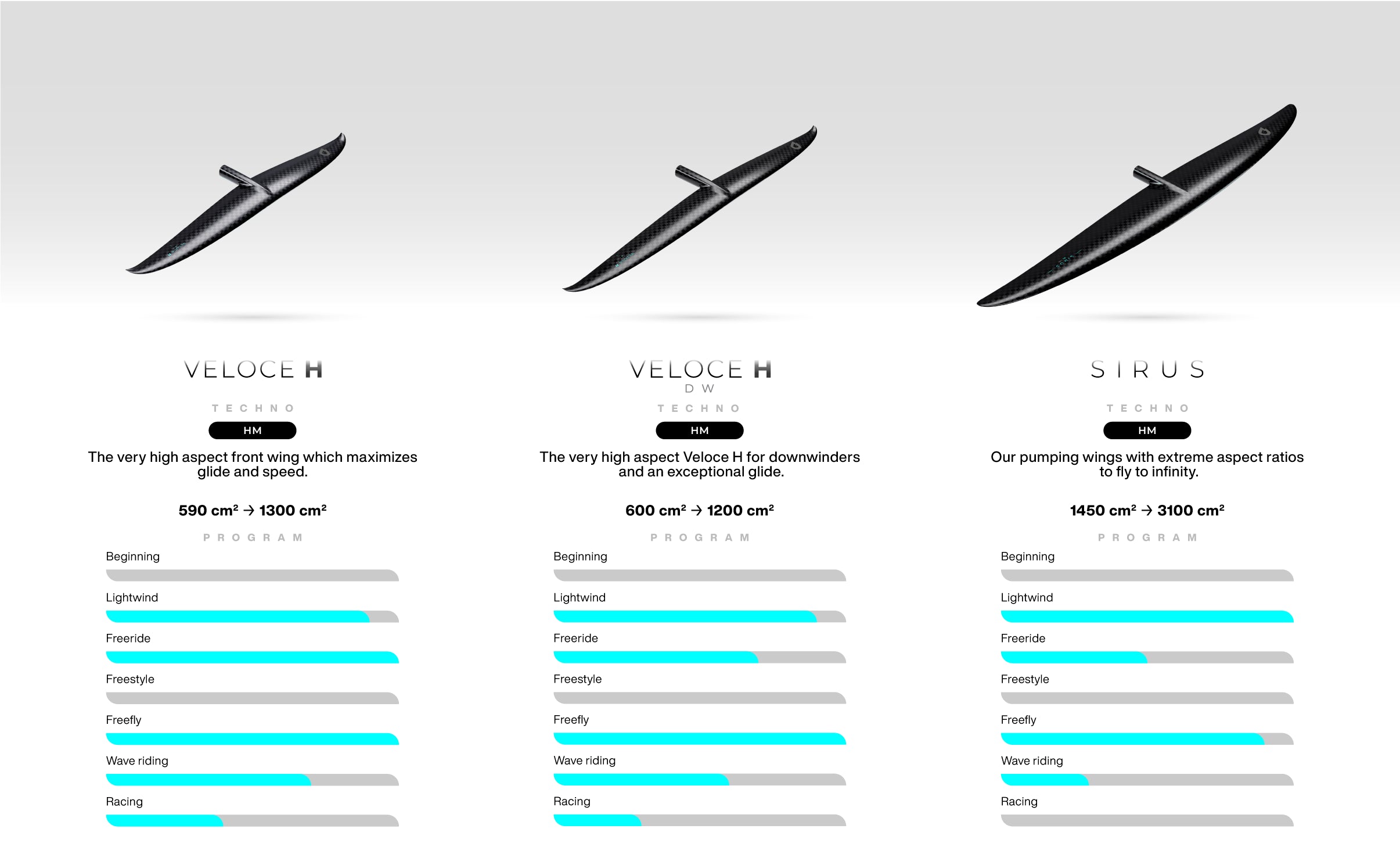
GONG V3 Team Pro Front Wings Range
Foils designed for record-breaking and peak performance, with no compromises. This is about absolute efficiency. Step into an exceptional world with the Team Pro range. These prepreg carbon wings are lightweight, durable, and extremely rigid.
- Ypra Surf: High-performance foil for powerful waves and fast surfers, combining speed, maneuverability, and control. Designed for extreme surfing in demanding waves.
- Ypra Surf Freestyle: Designed for freestyle surfing, this foil offers exceptional pop, a forgiving moderate aspect ratio, and a short wingspan for extreme tricks and radical aerial surfing.
- Ypra Slalom: Slalom version of the Race model, compatible with the V3 system. Ideal for World Cup slalom and freeracing, combining ultimate speed, forgiveness, and maneuverability.
- Ypra Race: Racing foil optimized for all courses, especially upwind. Engineered for maximum performance in racing, with an ultra-slick profile and specific fuselage, stabilizers, and small-diameter mast.
- Ultra Trail: High-performance pumping foil with exceptional efficiency and maximum glide for setting records. Ideal for experienced foilers seeking a benchmark in pumping performance.
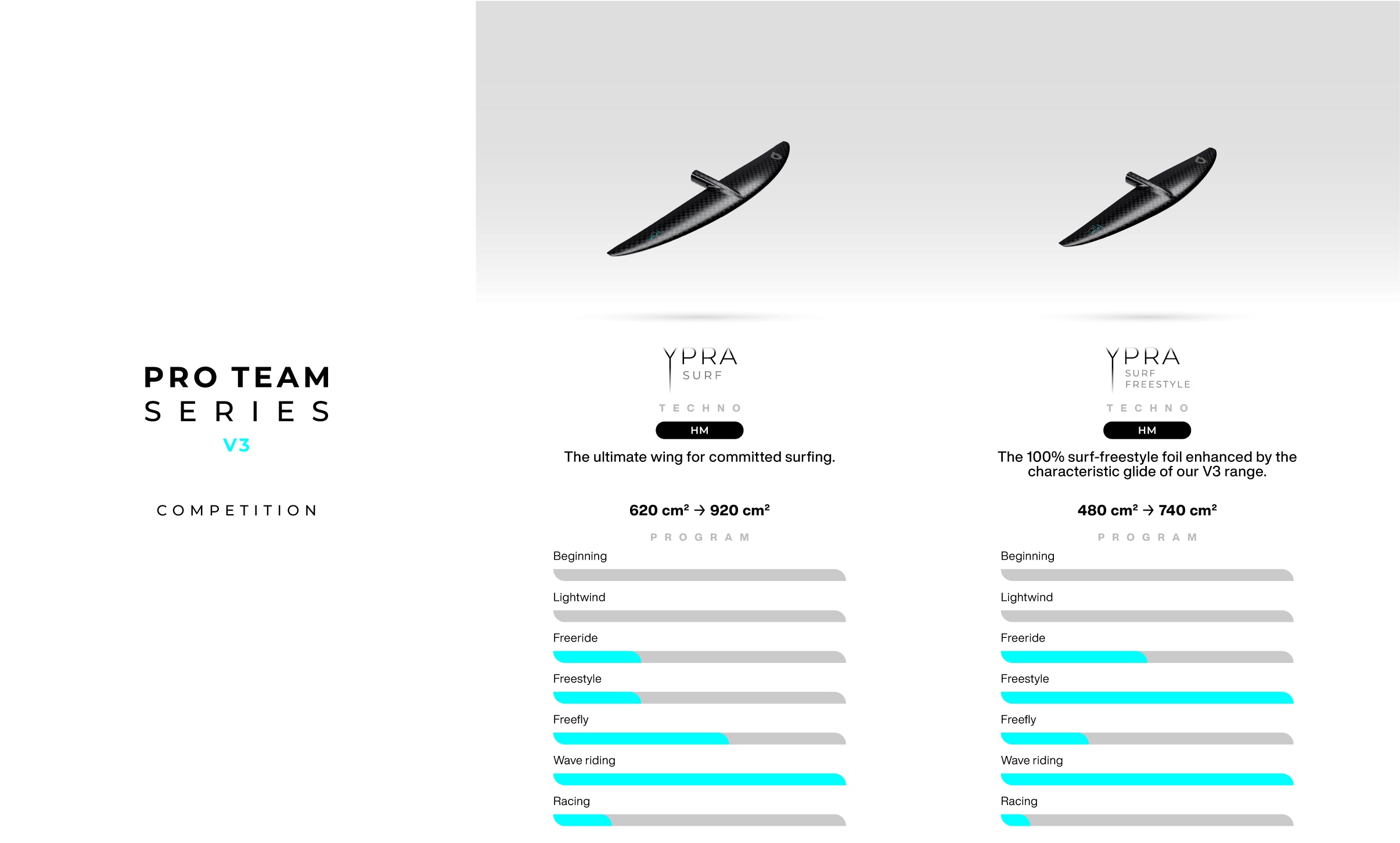
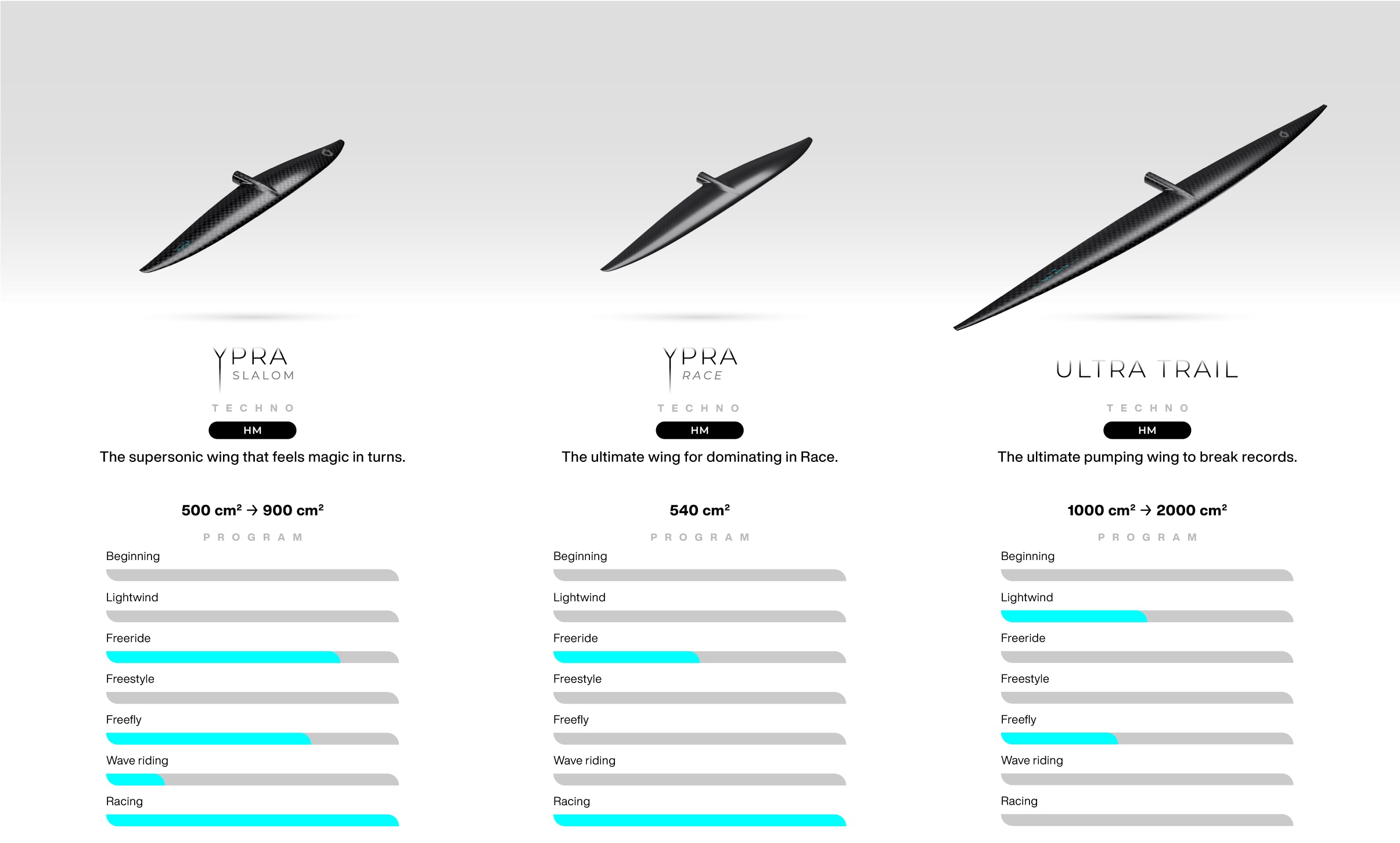
Riders' testimonials
Feedback from experienced users:
- Professional riders highlight the marked difference between the V2 and V3, particularly in terms of handling and glide. Experience feedback shows that the reduction in drag thanks to the ovoid shape of the fuselage improves speed and stability, even in small waves and light winds.
- Example of feedback on the Veloce H: ‘With the Veloce H, I've never felt so fluid on swell descents. The foil literally glides effortlessly, and I can link bumps together without having to pump constantly.‘
- Example of a testimonial on the Fluid H: ’It's the perfect foil for those who like a bit of nervousness under their feet. In freestyle, the handling is great, and I feel free in my movements, whether for carves or jumps.‘
Feedback from enthusiasts:
- Beginners find the V3 range an accessible piece of equipment, thanks in particular to the stability offered by the constant profiles and the ease of assembly.
- Example of a testimonial on the Curve: ’I started foil surfing with the Curve V3, and I felt at ease straight away. It's reassuring to know that the foil forgives small mistakes, and the glide is really pleasant, even at low speed.’
FAQ about the V3 GONG Foils range
Q: What is the difference between the V2 and V3 fuselages?
A: The main difference lies in the shape of the fuselage (square for V2, ovoid for V3), which reduces fuselage drag by 12% and improves rigidity by 30%. V3 fuselages are also lighter, and the wings provide similar lift with a surface area reduction of about 200 cm².
Q: How do I choose the size of my front wing?
A: The size of the front wing depends on your skill level, weight, and desired activity, but you should opt for a wing that is 200 cm² smaller than the V2 equivalent.
Q: What is the self-tightening interlocking system?
A: This system uses a triangular shape for the connections of the front wing and stabilizer. Once in place, the foil naturally tightens during use, eliminating the need for frequent screw adjustments. It remains easy to disassemble.
Q: Are V2 and V3 parts compatible?
A: Yes, thanks to adapter fuselages, users can upgrade their equipment without replacing everything. The price of an aluminum fuselage is €59, making the adaptation cost reasonable.
Q: Is the new ovoid fuselage more fragile than the previous square one?
A: No, on the contrary. The V3 ovoid fuselage is 30% stronger than the old square model due to better force distribution and a more robust shape.
Q: What is the difference between the V2 and V3 front wings?
A: The wings provide similar lift with about 200 cm² less surface area. The key innovation is in the glide performance. The foil glides much better and requires a smaller stabilizer, making it more playful and faster. The entire system is significantly more rigid.
Q: What are the benefits of a constant profile on a front wing?
A: A constant profile ensures consistent efficiency across the entire span of the wing. This makes flight more predictable and allows for a smaller front wing without losing lift, enhancing maneuverability and speed. The constant profile also enables a tip to exit the water without causing the foil to stall. Its overall behavior is much more stable.
Which V3 front wing should I choose for wing foiling?
Beginner:
Xover V3: Designed for a gentle learning curve and easy progression, the Xover V3 is perfect for beginners thanks to its great stability and forgiveness.
Ascent V3: For riders with experience in foiling or other board sports, the Ascent V3 offers great versatility and increased performance, allowing rapid progress and comfort in all conditions.
Lightwind:
Sirus V3: The ultimate reference for lightwind, the Sirus V3 features exceptional lift at very low speeds, guaranteeing flight even in light winds by offering an optimal glide-to-lift ratio to maximize every breath.
Veloce HDW V3: Ideal for dynamic sessions in light winds, the Veloce HDW V3 offers infinite glide and an excellent ability to generate apparent wind to boost sessions in light conditions. The Veloce V3 will deliver the same feeling but with a little less glide and much more maneuverability.
Curve and Fluid V3: In their large sizes, the Curve V3 and Fluid V3 have easy and early take-off capabilities, but they plateau in speed without consistent wind to propel them, sometimes requiring relaunches.
Freeride:
Ascent V3: For maximum comfort and safety, the Ascent V3 remains stable and reassuring, offering a super smooth glide for 100% fun sessions.
Curve V3: Ultra-forgiving and stable, the Curve V3 is ideal for riders looking for smooth curves, good speed, and cool waves, with maximum ease.
Fluid V3: With exceptional glide and increased responsiveness, the Fluid V3 is the perfect choice for intermediate riders looking to push their freeride limits while retaining good forgiveness.
Veloce V3: The Veloce V3 is a top freeride board with excellent glide and good maneuverability that will appeal to experienced riders.
Freestyle:
Ypra Surf Freestyle: Designed for extreme moves, the Ypra Surf Freestyle combines incredible pop and repop with a high level of error tolerance, ideal for chaining together radical freestyle tricks.
Fluid V3: Thanks to its glide, crazy pop, and reactivity, the Fluid V3 in less than 700 cm² makes it possible to perform moves with fluidity and precision. It's ideal for surf freestyle, but also pure freestyle with the Freestyle stab.
Freefly:
Veloce V3: The Veloce V3 is ideal for freefly, with excellent glide and good maneuverability for downwind and surfing in cool conditions.
Veloce HDW V3: With incredible glide, the Veloce HDW V3 excels in downwind, bringing exceptional speed and fluidity to freefly.
Fluid V3: Oriented towards surfing, its gliding qualities are simply amazing. If you want to carve in freefly, think about it!
Waveriding:
Ypra Surf: Optimized for powerful waves, the Ypra Surf provides exceptional control and high speed, ideal for precise trajectories and extreme surfing.
Fluid V3: For aggressive surfing and committed curves, the Fluid V3 stands out for its responsiveness and natural glide, ideal for powerful, dynamic surfing.
Ypra Surf Freestyle: With its pop and maneuverability, the Ypra Surf Freestyle is perfect for combining radical surfing and freestyle in the waves.
Racing:
Ypra Race: Designed for competition, the Ypra Race guarantees maximum performance on race courses, both upwind and downwind.
Ypra Slalom: Versatile for slalom and freerace, the Ypra Slalom combines speed, forgiveness, and maneuverability, making it an excellent choice for freerace and slalom competitions.
Veloce V3: In small sizes, the Veloce V3 offers decent speed and remains accessible, ideal for beginners who want to race without pressure.
Q&A: Discussions on the GONG V3 Foils range
Q: I’m new to foiling; what do you recommend?
A: For beginners, the X Over is an excellent choice. Its generous lift and stability make it the perfect front wing to learn how to manage the foil’s speed and lift without feeling destabilized.
Q: I do wing foiling in light wind; which model would suit me best?
A: For light wind conditions, the Veloce H is ideal. Its design enhances glide with minimal effort, allowing you to take off quickly even in low wind. Pairing it with a Veloce stabilizer will further enhance the feeling of continuous glide. In winds below 10 knots, the Sirus will enable you to fly before everyone else and maintain flight at good speeds even in just 6 knots.
Q: Which front wing should I choose for maximum maneuverability in waves?
A: The Fluid H is the best option for playful and dynamic performance in waves. Its design allows quick transitions from one rail to the other, making it ideal for tight carves and rapid maneuvers.
Summary of Key Strengths:
- The GONG V3 foils combine performance, ease of use, and durability, making them a benchmark choice for all types of foiling activities.
- Reduced drag, improved rigidity, and lighter weight allow riders to focus on their sensations and fully enjoy every session.
- Whether you’re a beginner or an expert, the V3 adapts to all aspirations, from chasing speed in downwind runs to enjoying smooth carves while surfing. Their advanced design ensures unmatched glide.
What size GONG V3 front wing should you choose according to your level?
The GONG V3 foils, with their optimized designs, offer superior lift and glide, allowing for a reduction in wing surface area by approximately 200 cm² compared to V2 models. Below are recommendations tailored to different skill levels and riding styles:
Beginners
For learning to foil, a front wing with sufficient surface area is essential for maintaining flight and enabling early takeoff, especially at low speeds. Beginners should prioritize larger surface areas for maximum stability and forgiveness. With V3 models, wings between 1,300 to 1,800 cm² are ideal, depending on weight and preferences.
Recommended sizes by weight:
- 70 kg rider: Front wing of 1,300 to 1,500 cm² for stability and easy takeoff.
- 85 kg rider: Front wing of 1,500 to 1,700 cm² for added lift and comfort.
- 100 kg rider: Front wing of 1,700 to 1,800 cm² to maximize takeoff and tolerance.
Intermediate / Advanced Riders
For more experienced riders, the choice of wing size depends on the primary goal: comfort, responsiveness, lightwind performance, or glide for freefly and downwind sessions.
Comfort and Stability
Select a front wing that balances lift and maneuverability. Wings between 1,100 to 1,400 cm² ensure early takeoff with good flight stability.
- Example: An 80 kg rider might choose a 1,200 cm² wing for a comfortable and versatile setup.
Responsiveness
For a more dynamic riding style, wings between 900 and 1,200 cm² are ideal. This smaller surface reduces drag, providing more reactive handling, but requires good technical skills to maintain control.
- Example: An 80 kg rider using a 1,000 cm² wing will enjoy increased maneuverability, though takeoff may demand more effort.
Lightwind Performance
In light wind conditions, larger wings (about 1,200 to 1,600 cm² for V3 foils) ensure sustained flight even with minimal energy. The Sirus V3 is highly recommended for maximizing lift at very low speeds, making it perfect for lightwind sessions.
Glide for Freefly / Downwind
Advanced riders seeking maximum glide for downwind or freefly sessions should choose high-aspect-ratio wings, typically between 1,000 and 1,200 cm² for V3 models. These wings optimize continuous speed and glide but require advanced technical skills.
Professional and Experienced Riders
Extreme Lightwind Performance
To maximize performance in extremely light winds, pros use front wings between 900 and 1,300 cm². Models like the Veloce HDW V3 provide optimized lift and glide, enabling flight in marginal conditions and extended lightwind sessions.
Downwind and Freefly
For downwind runs, ideal wing sizes for pros range between 650 and 950 cm². Foils like the Veloce HDW V3 deliver optimal glide, facilitating smooth transitions between bumps with minimal speed and enhanced control.
Freestyle
For freestyle, wings between 600 and 700 cm² are perfect for a combination of lightness, pop, and responsiveness in aerial moves. The Ypra Surf Freestyle V3 is well-suited for these dimensions, offering high maneuverability for aerial tricks and tight carves.
Radical Surfing
In technical and aggressive surfing, pros prefer front wings between 500 and 700 cm². The Ypra Surf V3 and Fluid V3 cater to this need with their extreme maneuverability and responsiveness, enabling radical maneuvers, sharp snaps, and slashes for incisive wave riding.
Racing and Pure Speed
In speed and slalom competitions, pros opt for wings between 450 and 650 cm². Models like the Ypra Race V3 and Ypra Slalom V3 ensure maximum speeds and precise reactivity, ideal for tight trajectories and rapid acceleration.
These recommendations reflect the versatility and performance capabilities of the GONG V3 foil range, ensuring there is an ideal setup for every skill level and riding style.
Which V3 front wing should I choose for surf foiling?
For Beginners:
Xover V3: Designed for a smooth learning experience, the Xover V3 is perfect for starting surf foiling thanks to its generous lift and forgiveness. Ideal for building the foundations of the practice with full confidence, it will accompany you in your first take-offs and turns.
Ascent V3: For riders with experience in board sports, the Ascent V3 offers great versatility and increased performance, allowing rapid progression while maintaining reassuring stability.
To Progress:
Ascent V3: This versatile foil allows you to ride a variety of waves with a great margin for progression. It combines smooth glide and good control, making it ideal for those looking to link waves with peace of mind.
Curve V3: Tolerant and fluid, the Curve V3 is perfect for progressing riders who want to tackle more technical turns while combining optimal comfort for pumping and intuitive maneuverability.
For Connecting and Cool Surfing:
Veloce H, Fluid H, Curve H: In large sizes, these wings offer great glide and allow for multiple connections while maintaining a really smooth maneuverability in surf.
Sirus V3: The ultimate reference for pumping between waves, the Sirus V3 offers exceptional lift at low speeds, allowing for smooth connections between waves and extended flights with a longboard feel, even in the smallest conditions.
Veloce HDW V3: Ideal for fast pumping and long flights, the Veloce HDW V3 combines endless glide with high energy efficiency to maximize each take-off.
For Everything Easy:
Curve V3: Versatile, easy, and forgiving, the Curve V3 is an essential choice for a perfect balance between maneuverability and glide.
Fluid V3: With its natural glide and reactivity, the Fluid V3 allows for smooth surfing and pumping while offering excellent maneuverability, ideal for mixing fluidity and varied moves.
For Dominating the Waves:
Ypra Surf: Optimized for aggressive surfing, the Ypra Surf excels in powerful waves, offering precise control and high speed, ideal for radical trajectories and hard carves.
Fluid V3: Ultra-responsive and maneuverable, the Fluid V3 in smaller sizes enables aggressive surfing, perfect for surfers looking to push their style and commitment.
For Tow-In:
Ypra Surf: Designed for powerful waves, the Ypra Surf ensures perfect control in fast and committed conditions, making it ideal for tow-in in big swells.
Veloce H, Fluid H, Curve H: In very small sizes, these intuitive wings provide enough speed to charge fast waves and perform big maneuvers.
Which V3 front wing should I choose for pumping?
For Beginners:
Trail V3: With its maximum lift and thick profile, the Trail V3 is perfect for your first pumping sessions. It's ideal for getting familiar with the basics of pumping without excessive effort.
Sirus V3: Its excellent balance between lift and glide makes it an accessible option for beginner riders. It helps maintain stable flight with minimal effort, ideal for learning the rhythm of pumping.
X-Over V3: Stability and forgiveness are key with the X-Over V3, a stable and intuitive wing that ensures a smooth learning experience.
To Progress:
Trail V3: Super easy and user-friendly, the Trail V3 is the perfect front wing for progression. With its intuitive handling and maximum lift, it allows you to focus on pumping while building confidence. Perfect for progressing in pumping without pushing your cardio.
Sirus V3: Docile and easy to use in small sizes, the Sirus V3 offers a great balance between lift and glide. It helps maintain stable flight with minimal effort, ideal for synchronizing your movements and progressing with confidence.
Curve V3: With its ultra-simple profile and relatively high ratio, the Curve V3 boosts your progression. It combines maneuverability and smooth glide, perfect for refining your technique and solidifying your pumping foundation.
For Long Pumping Sessions:
Ultra Trail V3: Specifically designed to maximize pumping distance, it allows you to break your personal records for time spent pumping with exceptional efficiency and incredible stability.
Sirus V3: A reference for long flights, the Sirus V3 excels in extended cruising at moderate speeds thanks to its generous lift and ability to maintain flight with minimal energy.
Veloce HDW V3: With exceptional glide, this wing is ideal for experienced riders looking to extend their pumping endurance while maintaining good speed.
For Fast Pumping:
Veloce HDW V3: Its high ratio and superior glide allow for impressive speeds while pumping. Perfect for experienced riders seeking very dynamic performance.
Veloce V3: More forgiving than the HDW, the Veloce V3 combines speed and maneuverability for fast and smooth trajectories. A fun option for speed enthusiasts.
Ultra Trail V3: Specifically designed to maximize pumping distance, in smaller sizes it allows respectable speeds with exceptional efficiency and incredible stability.
For Pumping and Carving:
Fluid V3: Its natural ability to carve makes it an excellent choice for those who want to combine pumping and tight turns with smoothness.
Curve V3: Versatile and forgiving, the Curve V3 allows you to combine efficient pumping with smooth turns.
Veloce V3: More glide-oriented, the Veloce V3 combines speed and maneuverability for fast and fluid turns. A versatile option for speed lovers.
Which front wing to choose for SUP foiling?
For Beginners in Surfing:
X-Over V3:
Ideal for a smooth and easy learning experience, the X-Over V3 provides generous lift and reassuring stability. Perfect for discovering SUP foil surfing and achieving your first paddle take-offs.
Ascent V3:
Designed for riders with prior board sports experience, the Ascent V3 offers rapid progression with comfortable lift and balanced maneuverability.
For Progressing in Surfing:
Ascent V3:
A versatile foil for riding various types of waves, combining simplicity and maneuverability for safe and quick progression.
Curve V3:
Forgiving and relaxed, the Curve V3 is an excellent choice for refining turns and improving precision on more technical waves.
For Pumping in Waves:
Sirus V3:
The ultimate reference for wave pumping, the Sirus V3 enables fluid connections with exceptional lift at low speeds.
Veloce H, Fluid H, Curve H (Large Sizes):
These wings, with excellent glide and smooth handling, allow for multiple connections while maintaining great maneuverability in surf.
Veloce HDW V3:
Perfect for extending flights between waves, it offers infinite glide at high speed with exceptional energy efficiency.
For Easy All-Around Performance:
Curve V3:
The go-to versatile choice for surfing, pumping, and connecting waves with ease.
Fluid V3:
With its natural glide and responsiveness, the Fluid V3 excels in varied conditions, offering a perfect balance between tolerance and top-notch maneuverability.
For Aggressive Surfing:
Ypra Surf V3:
For experienced riders seeking to push their performance, the Ypra Surf delivers incredible speed, insane maneuverability, and pinpoint precision for radical trajectories.
Fluid V3:
Highly responsive in small sizes, the Fluid V3 enables aggressive surfing with a strong focus on tight carves.
For Beginner Flat Starts:
Trail V3:
Perfect for early flat-start attempts, its thick profile and maximum lift make take-offs easy with minimal energy, while remaining gentle and forgiving.
Sirus V3:
With a mix of exceptional lift and glide, it offers a smooth transition from paddling to flight, ideal for progressing riders.
Ultra Trail V3:
With generous lift and unmatched glide, it allows flat starts and prolonged flights with minimal effort.
For Experienced Flat Starts:
Sirus V3:
Its balanced lift and natural glide enable smooth and efficient starts for advanced riders.
Ultra Trail V3:
Optimized for long distances, it’s ideal for experienced riders aiming to maximize efficiency during flat starts.
Veloce HDW V3:
Offering superior glide, it’s suited for more technical flat starts, where speed is a priority.
For Beginner Downwinds:
Sirus V3:
The high lift and stability of the Sirus V3 make it an excellent choice for learning downwind SUP foiling.
Veloce V3:
Forgiving and stable, it allows beginners to approach downwinds smoothly while staying versatile for varied conditions.
For Experienced Downwinds:
Veloce HDW V3:
A benchmark for glide and energy efficiency, it covers long distances with ease.
Veloce V3:
Forgiving and stable, it performs well in smaller sizes for downwinds, remaining very maneuverable and playful with great glide.
Sirus V3:
Highly stable and predictable, it’s a perfect choice for progressing riders.
For Pro-Level Downwinds:
Veloce HDW V3:
With its infinite glide and high aspect ratio, it excels in the most technical conditions and long-distance races.
Which front wing to choose for kite foiling?
For Beginners:
- X-Over V3 (small sizes only, <1000 cm²):
Perfect for discovering kitefoiling, the small X-Over V3 offers generous lift and reassuring stability, making first flights easier. Ideal for building a strong foundation with an intuitive and forgiving wing. - Ascent V3 (small sizes only, <1000 cm²):
With smooth and balanced lift, the small Ascent V3 allows for rapid progression while offering enough maneuverability to develop technical skills. - Curve V3 (small sizes):
Its accessible and forgiving profile, combined with moderate lift, makes it an ideal wing for beginners looking to experience the first sensations of carving.
For Progression:
- Curve V3 (small sizes):
With a good balance between maneuverability and forgiveness, the Curve V3 is ideal for exploring more technical trajectories and developing skills. - Fluid V3 (small sizes):
Smooth glide and increased responsiveness make it perfect for intermediate riders looking to boost their speed and precision. - Veloce V3 (small sizes):
With a high aspect ratio, it combines performance and control, ideal for refining technique and pushing speed limits.
For Light Wind:
- Curve V3 (small sizes):
An excellent option for light wind, with sufficient lift and great maneuverability to enjoy leisurely sessions in gentle breezes. - Fluid V3 (small sizes):
With smooth glide and high tolerance, the Fluid V3 excels in low-wind conditions while allowing stylish navigation. - Veloce V3 (small sizes):
Designed for fast and steady gliding, this high-performing front wing is particularly effective in light wind. Alternatively, the Veloce HDW V3 (small sizes only) offers impressive glide and a high aspect ratio, making it suitable for marginal conditions to maximize apparent wind speed.
For Freeride:
- Fluid V3 (small sizes):
With natural glide and carving ability, it provides a smooth and dynamic freeride experience. - Curve V3 (small sizes):
Its stability and forgiveness make it easy to handle, perfect for relaxed freeride sessions. - Veloce V3 (small sizes):
Its fast glide and controlled maneuverability make it ideal for experienced riders looking to maximize their enjoyment in fast freeride.
For Freestyle:
- Ypra Surf Freestyle V3 (450-680 cm²):
Optimized for radical tricks and aerial moves, this front wing combines pop, responsiveness, and low-end tolerance. Perfect for quick transitions and technical moves. - Fluid V3 (small sizes):
Responsive and maneuverable, it allows smooth transitions and aerial tricks with ease.
For Big Air:
- Ypra Surf Freestyle V3 (450-550 cm²):
Designed for extreme jumps, it offers maximum control and exceptional pop, perfect for reaching dizzying heights. - Fluid V3 (small sizes, <550 cm²):
A fast and responsive alternative for riders seeking a stable and maneuverable wing for big air.
For Wave Riding:
- Ypra Surf V3 (small sizes):
The benchmark for waves, it combines speed and control for safe, precise, and fluid trajectories. - Fluid V3 (small sizes):
Perfect for carving and snapping in waves, it offers an excellent compromise between glide and maneuverability. - Curve V3 (small sizes):
Forgiving at low speeds and easy to handle, it is ideal for exploring waves and developing your style without stress.
For Racing:
- Ypra Race V3:
The ultimate foil for competition, this ultra-fast and precise wing is perfect for maximizing performance in both upwind and downwind racing. - Ypra Slalom V3:
More forgiving than the Ypra Race, it combines maneuverability and speed to excel in freerace and slalom. Ideal for versatile competitors. - Veloce V3 (small sizes):
A more accessible option for getting started in racing while offering a good balance between speed and control.
GONG V3 Foils by characteristics
Takeoff:
Wings ranked from the earliest to the least early for takeoff.
- Trail V3: Its very specific thick profile allows it to take off earlier than all others.
- Sirus V3: Exceptional lift at low speeds, a benchmark for light wind and marginal conditions.
- X-Over V3: Stable and very forgiving, ideal for beginners with easy takeoff.
- Ascent V3: Comfortable with quick takeoff for progressing riders.
- Curve V3: Progressive and smooth takeoff, ideal for freeride and waves.
- Fluid V3: Optimized glide, requires slightly more advanced technique than the Curve for takeoff.
- Ypra Surf Freestyle V3: Maximum maneuverability, suitable for experienced riders but with excellent low-end range.
- Veloce V3: Requires a good skill level for efficient takeoff but offers excellent glide.
- Ultra Trail V3: Its profile takes off early, but the large ratio requires technique.
- Veloce HDW V3: Designed for downwind, excellent for pumping and taking off with minimal energy available.
- Ypra Surf V3: Optimized for waves, requires mastery for effective takeoffs.
- Ypra Slalom V3: Specialized for slalom, requiring fine technique for takeoff.
- Ypra Race V3: Demands very advanced skills to take off.
Maximum Speed (Vmax):
Wings ranked from the fastest to the slowest in achieving maximum speed.
- Ypra Race V3: Optimized for maximum performance in racing, top-tier Vmax. Easily over 35 knots in wing use.
- Ypra Slalom V3: Designed for slalom, combining very high speed with reactivity.
- Ypra Surf V3: Excellent in powerful waves with a fast and stable high-speed profile.
- Veloce HDW V3: Superior glide, ideal for downwind and light wind, with high and very linear speed.
- Veloce V3: Very high-performing with a high ratio that boosts average riding speed, perfect for free-flying and stylish surf gliding.
- Fluid V3: Enables fluid, dynamic surfing with excellent Vmax, designed for carving and freeride.
- Ypra Surf Freestyle V3: Excellent compromise between maneuverability and speed.
- Curve V3: Moderate ratio offering control with an interesting and reassuring average speed, perfect for relaxed riders.
- Ascent V3: A good compromise between speed and stability, suitable for fast progression without stress.
- Ultra Trail V3: Its profile can handle a good Vmax, but its span makes control tricky at high speeds.
- Sirus V3: Maximum lift at low speeds, oriented for light wind, less so for Vmax. Still exceeds 20 knots.
- X-Over V3: Designed for learning, offering moderate and stable speeds.
- Trail V3: Its thick profile focuses on low-speed efficiency.
Maneuverability:
Wings ranked from the most maneuverable to the least for performing maneuvers.
- Ypra Surf Freestyle V3: Ultimate maneuverability for freestyle surfing, perfect for aerial moves.
- Ypra Surf V3: Designed for committed lines in powerful waves.
- Fluid V3: Reactive and ideal for dynamic turns, perfect for engaged surfing.
- Curve V3: Offering comfort and forgiveness, excellent for smooth and stable turns.
- Ascent V3: Very versatile with balanced maneuverability for progression.
- X-Over V3: Predictable and stable, excellent for riders in the learning phase.
- Trail V3: Its elliptical outline promotes rail-to-rail transitions.
- Veloce V3: Good maneuverability in free-flying with continuous glide and plenty of style.
- Veloce HDW V3: Superior glide for downwind, requiring skill for precise maneuvers.
- Ypra Slalom V3: Excellent in freerace and slalom with good responsiveness.
- Ypra Race V3: Maneuverability optimized for racing courses.
- Sirus V3: Prioritizes lift, with secondary focus on maneuverability for light wind.
- Ultra Trail V3: Incredible glide, but its design focuses on straight, sustained motion.
Minimum Stall Speed:
Wings ranked from the most forgiving to the least forgiving for maintaining flight at low speeds.
- Trail V3: Its profile is 100% focused on the low range—unbeatable!
- Sirus V3: Maintains stable flight at very low speeds, ideal for light wind and marginal conditions.
- X-Over V3: Designed to facilitate low-speed flight, highly accessible for beginners.
- Ascent V3: Enables smooth low-speed flight, ideal for progressing riders.
- Curve V3: Great tolerance to stalling, perfect for freeride and relaxed waves.
- Ypra Surf Freestyle V3: Forgiving in freestyle surfing, maintaining incredible flight stability for radical maneuvers.
- Fluid V3: Optimized glide, offering excellent tolerance at low speeds, especially in surf.
- Veloce V3: Very good low-speed flight maintenance for free-flying and stylish surfing.
- Ultra Trail V3: Relatively thick yet elongated, allowing relatively easy low-speed performance.
- Veloce HDW V3: Excellent at maintaining flight with fabulous glide for skilled pilots.
- Ypra Surf V3: Adapted for powerful waves, requiring good control to maintain glide at low speeds.
- Ypra Slalom V3: Designed for freerace and slalom, requiring technique to fly at low speeds.
- Ypra Race V3: Optimized for competition speed, less forgiving at low speeds.
Exemples de quivers de foils
Le choix d’un quiver de foils dépend de plusieurs facteurs, notamment votre niveau, votre style de pratique, les conditions de vent et les spécificités de votre région de navigation. Voici des exemples de recommandations adaptées à différentes zones géographiques :
1. Méditerranée (France, Espagne, Italie) :
La Méditerranée est caractérisée par des vents légers, entrecoupés de périodes de vents forts comme le Mistral ou la Tramontane.
• Lightwind : Optez pour une aile avant de grande surface, telle que la Sirus V3 (1300 cm² et plus), offrant une portance exceptionnelle pour décoller tôt dans des conditions marginales.
• Vents forts : Pour les jours de Mistral ou de Tramontane, une aile plus petite comme la Fluid V3 (600 à 700 cm²) sera idéale pour le surf et le carving dans les vagues.
2. Côte Atlantique (France, Portugal) :
Cette région bénéficie de vents réguliers et de vagues consistantes, idéales pour le surf et le freeride.
• Freeride : Une aile polyvalente comme la Curve V3 (800 à 1000 cm²) offre un excellent compromis entre maniabilité et facilité, adaptée aux conditions variées de l’Atlantique.
• Surf : Pour les amateurs de vagues, la Fluid V3 (600 à 700 cm²) permet des manœuvres précises et une réactivité optimale dans le surf.
3. Mer du Nord et Baltique (Allemagne, Danemark, Pays-Bas) :
Les conditions y sont souvent changeantes, avec des vents modérés à forts et une mer parfois agitée.
• Polyvalence : La Ascent V3 (900 à 1100 cm²) est idéale pour les riders recherchant une progression rapide, offrant stabilité et performance dans des conditions variées.
• Vents forts : Lors de conditions musclées, une aile plus petite comme la Veloce V3 (700 à 900 cm²) permettra de maintenir le contrôle et d’atteindre des vitesses élevées en freefly par exemple.
4. Lacs et plans d’eau intérieurs (Suisse, Autriche, Allemagne) :
Les vents y sont souvent légers et irréguliers, nécessitant des équipements adaptés pour maximiser le temps sur l’eau.
• Lightwind : La Sirus V3 (1300 cm² et plus) est recommandée pour sa portance à basse vitesse, facilitant le décollage dans des conditions marginales.
• Progression : Pour ceux souhaitant évoluer, la X-Over V3 (1000 à 1200 cm²) offre une grande tolérance et stabilité, idéale pour l’apprentissage et la progression.
5. Régions tropicales (Caraïbes, Brésil) :
Ces zones offrent des conditions de vent modéré à fort, avec des eaux chaudes et souvent des vagues.
• Freestyle : La Ypra Surf Freestyle V3 (600 à 700 cm²) est parfaite pour les riders expérimentés recherchant maniabilité et réactivité pour des figures aériennes.
• Downwind : Pour les longues descentes sous le vent, la Veloce HDW V3 (650 à 950 cm²) offre un glide exceptionnel et une efficacité énergétique optimale.
Conseils supplémentaires :
• Appairage aile avant/stabilisateur : Il est courant d’associer une aile avant avec un stabilisateur de la même gamme pour une cohérence de performance. Cependant, mixer les appairages peut permettre d’ajuster le comportement du foil selon vos préférences. Par exemple, associer une aile Curve V3 avec un stabilisateur Fluid V3 peut augmenter la vitesse maximale et la réactivité.
• Taille du stabilisateur : Adapter la taille du stabilisateur peut influencer la maniabilité et la stabilité. Un stabilisateur plus petit augmentera la maniabilité mais nécessitera plus de contrôle, tandis qu’un stabilisateur plus grand offrira plus de stabilité et de portance, facilitant le décollage et le maintien en vol.
Exemples de Quivers :
Front Wings :
• Sirus XL : Pour les conditions d’ultra light wind. Cette aile assure une portance maximale dès les basses vitesses, idéale pour maintenir le vol quand le vent est à peine suffisant.
• Veloce L : Parfaite pour le light wind, offrant un excellent glide et une capacité à générer du vent apparent pour une glisse rapide.
• Fluid XS : Idéale pour le surf, permettant un surf fluide et engageant. Cette aile combine réactivité et fluidité pour les manœuvres en courbes.
• Ypra SF M (Ypra Surf Freestyle) : Conçue pour le freestyle, cette aile est un choix de référence pour les riders cherchant des figures aériennes dynamiques et un contrôle précis.
Stabilisateurs :
• Curve XL : Apporte un équilibre parfait entre portance et maniabilité, offrant une stabilité rassurante tout en permettant des manœuvres et un bon pumping.
• Fluid L : Spécialement adapté au light wind, ce stab favorise une glisse fluide et dynamique, parfait pour des sessions où la maniabilité et la vitesse sont requises.
• Surf Freestyle S : Optimisé pour le surf, il permet des changements de direction rapides et précis, idéal pour un surf réactif dans les vagues.
• Freestyle S : Conçu pour envoyer du lourd en freestyle, offrant un excellent pop et une grande réactivité pour les tricks aériens et les manœuvres radicales.
Ce quiver est pensé pour couvrir un large éventail total de conditions et de pratiques, vous permettant d’exploiter chaque session de manière optimale.
Quick Guide to the Most Common Wing Surface Areas by Sport and Program
Wing Foil
- For beginners: 1,300 to 1,800 cm²
- For progressing: 1,000 to 1,300 cm²
- For lightwind: 1,200 to 1,600 cm²
- For freeride: 800 to 1,200 cm²
- For freestyle: 600 to 700 cm²
- For wave riding: 500 to 700 cm²
- For racing: 450 to 700 cm²
Surf Foil
- For beginners: 1,300 to 1,800 cm²
- For progressing: 1,000 to 1,300 cm²
- For pumping and easy surfing: 1,200 to 1,600 cm²
- For all-around ease: 800 to 1,200 cm²
- For carving waves: 700 to 900 cm²
- For tow-in: 500 to 700 cm²
Pumping Foil
- For beginners: 1,500 to 2,000 cm²
- For progressing: 1,200 to 1,600 cm²
- For long pumping sessions: 1,500 to 2,500 cm²
- For faster pumping: 800 to 1,200 cm²
- For pumping and carving: 700 to 900 cm²
SUP Foil
- For beginners in surf: 1,300 to 1,800 cm²
- For progressing in surf: 1,000 to 1,300 cm²
- For pumping in waves: 1,200 to 1,600 cm²
- For all-around ease: 1,000 to 1,400 cm²
- For aggressive surfing: 800 to 1,100 cm²
- For flat-water starts (beginners): 1,800 to 3,000 cm²
- For flat-water starts (experienced): 1,000 to 1,500 cm²
- For downwind (beginners): 1,200 to 1,800 cm²
- For downwind (experienced): 800 to 1,100 cm²
- For downwind (pros): 600 to 900 cm²
Kite Foil
- For beginners: 800 to 1,000 cm²
- For progressing: 700 to 800 cm²
- For lightwind: 700 to 800 cm²
- For freeride: 600 to 800 cm²
- For freestyle: 450 to 600 cm²
- For big air: 450 to 550 cm²
- For wave riding: 500 to 700 cm²
- For racing: 450 to 550 cm²
Pairing stabs and front wings
Here is a detailed guide to understanding the pairing principles between front wings and stabilizers in the GONG V3 range, aimed at optimizing the performance of each foil based on the program and user preferences. The goal is to enable effective customization of the foil according to expectations, whether it's to enhance the basic characteristics of a front wing or to attenuate certain aspects depending on specific needs.
Standard Pairings or Mixes?
Traditionally, a front wing is paired with the stabilizer from the same program: for example, a Curve V3 with a Curve stabilizer for an optimal balance of stability and maneuverability, which aligns with the base performance intended for the Curve program. However, it is entirely possible to mix different stabilizers to modulate the characteristics of the front wing:
Performance Pairing for Surfing:
Pairing a Fluid V3 with a Fluid stabilizer is ideal for achieving fast glide, dynamic responsiveness, and a turning behavior that perfectly meets the demands of committed surfing. However, by choosing a Curve stabilizer for the Fluid, you enhance maneuverability by tightening turns while sacrificing a bit of top speed. This pairing would suit those seeking more control in surfing at the cost of a slightly reduced maximum speed.
Optimization for Freeride:
Using a Curve V3 with a Fluid stabilizer will increase speed and glide, perfect for those looking to extend the freeride performance of the Curve. This setup maintains enhanced glide while keeping the Curve’s tolerance, making it ideal for those who prefer faster riding without compromising stability.
Stabilizer Size: Adjustment and Influence
The choice of stabilizer size relative to the front wing plays a crucial role in the foil's overall behavior. Here are some general principles:
Size-Matched Pairing:
By following the standard pairing (for example, a size L front wing with a size L stabilizer), you ensure optimal balance. This pairing is the most intuitive for most riders, offering a good compromise between lift, stability, and maneuverability with self-stabilizing characteristics.
Reducing Stabilizer Size:
By choosing a smaller stabilizer (e.g., an M stabilizer with an L front wing), the foil becomes more technical and less stable. This reduces the influence of the front foot, offering increased maneuverability but requiring high technical skills for precise handling. This combination suits experienced riders looking for a more reactive foil for radical maneuvers.
Increasing Stabilizer Size:
Opting for a larger stabilizer (e.g., an XL stabilizer on an L front wing) makes the foil more stable, enhances front-foot lift, and improves self-stability. It can also compensate for slight handling errors by keeping the foil better aligned with the water flow. While this increases drag, this setup allows some riders to gain more control, especially to improve cruising speed while keeping the foil perfectly aligned.
Pairing Tips by Program
The choice of pairing between front wing and stabilizer depends on the desired program, and it is essential to take this into account to optimize performance:
Lightwind and Glide:
In lightwind conditions, front wings like the Sirus V3 or Veloce HDW paired with a stabilizer from the same program provide superior lift and glide, ideal for maintaining flight in low-energy conditions. However, if the goal is to gain maneuverability while maintaining good lift, a Curve stabilizer can be chosen with the Sirus or Veloce to balance lift and responsiveness.
Freeride and Surf:
For aggressive surfing, a Fluid V3 with a Fluid stabilizer ensures dynamic glide and carving responsiveness. Adding a Curve stabilizer to a Fluid tightens the turns, which may be desired for a more engaging surfing feel. For freeride, a Curve V3 paired with a Fluid stabilizer increases top speed, energizing performance without losing stability.
Racing and Downwind:
In racing configurations, larger, more streamlined stabilizers like the Ypra Race or Veloce stabilizers allow for maximum control in downwind conditions. Pairing a downwind front wing with a slightly larger stabilizer ensures smooth axis maintenance and continuous stabilization, beneficial for those looking for linear performance in races.
Everything you need to know to choose your wing foil
Choosing the ideal foil can quickly become complex with the numerous parameters to consider. Size, surface area, ratio, thickness, profile... These are all characteristics that influence glide, lift, and maneuverability. In this guide, we break down the essential elements to help you make the right choice.
Surface Area of the Front Wing
The surface area of the front wing is crucial for determining lift, speed, and maneuverability. Generally, a larger wing is more stable and offers better low-speed lift, making it ideal for beginners and light wind conditions. On the other hand, a smaller wing favors speed and maneuverability but requires more experience.
- Large Surface: Ideal for light wind, beginners, and riders looking for prolonged glide and high stability.
- Small Surface: Perfect for waveriding, racing, and freestyle, offering enhanced responsiveness for quick, dynamic maneuvers.
Aspect Ratio
The aspect ratio (the ratio between wingspan and surface area) directly influences stability, glide, and maneuverability. A high aspect ratio provides better glide and higher top speed, but may make the foil more technical to handle, whereas a moderate ratio improves control and tolerance. A low aspect ratio will be very forgiving but slower.
- Low Ratio (less than 6): For beginners seeking safety with a simple, tolerant foil.
- Moderate Ratio (6 to 9): A good compromise between maneuverability, smooth glide, and stability, ideal for freeride, surfing, freestyle, and varied conditions.
- High Ratio (9 to 12): For glide and speed, suitable for lightwind, downwind, and racing.
- Extreme Ratio (over 13): For pumping and maximum glide with minimal energy.
Types of Front Wing Outlines
Rectangular Outline
- Characteristics: Offers moderate wingspan and even surface distribution.
- Advantages: Very stable due to surface being spread evenly; offers predictable lift. Ideal for beginners and those seeking stability.
- Disadvantages: Less maneuverable and harder to react in tight turns; higher drag limits speed and glide.
Tapered Outline
- Characteristics: Diamond-shaped surface, concentrated at the center and tapering off towards the tips.
- Advantages: More maneuverable in turns, as the reduced surface at the tips helps change direction; lower drag for better glide.
- Disadvantages: Less stable due to smaller tips, requiring more technical control; sometimes abrupt behavior.
Elliptical Outline
- Characteristics: Surface is concentrated at the center, tapering smoothly to the tips.
- Advantages: More maneuverable in turns with smooth tip reduction, helping controlled direction changes; lower drag.
- Disadvantages: Less stable due to smaller tips, requiring more technical control; less glide due to significant cord length at the wing's span.
Crescent Outline
- Characteristics: Curved surface tapering toward the rear, with the lift concentrated at the center.
- Advantages: More stable and progressive in turns due to the rearward lift; smoother glide.
- Disadvantages: Less responsive.
Football Outline
- Characteristics: Surface concentrated at the tips with reduced center chord.
- Advantages: Ultimate lateral stability.
- Disadvantages: Poor maneuverability; significant mechanical stresses causing flex and torsion; risk of cavitation and abrupt turns.
Dihedral of the Front Wing
The front wing’s curve when viewed from the front is called the dihedral. This refers to the angle at which the two halves of the wing are tilted relative to the horizontal axis. Depending on this tilt, we talk about:
- Neutral Dihedral: Flat wing with no upward or downward inclination. Provides uniform lift and constant stability.
- Positive Dihedral: Tips are lifted upward, which increases lateral maneuverability and responsiveness without reducing lift.
- Negative Dihedral (Anhedral): Tips are downward, promoting stability in turns by keeping the tips engaged in the water, though this can reduce lift.
The dihedral plays a key role in lift, stability, grip, and maneuverability. The curvature of the tips is part of the dihedral, but it’s the central curvature that primarily defines the wing’s character. A negative dihedral is more grippy but can be made more maneuverable with positive tips or snappier with flat tips.
Detailed Dihedral Types
Flat Dihedral
- Characteristics: The wing is mostly flat with no significant upward or downward curve.
- Advantages: Provides regular, predictable lift and stable glide. Ideal for speed and flat or aerial maneuvers.
- Disadvantages: Less stable in sharp turns, as the lack of curvature reduces lateral engagement in water.
Lowered Dihedral
- Characteristics: The wing’s halves tilt downward, creating a descending shape at the center.
- Advantages: Better grip in the water during turns and reduces vibrations in choppy waters.
- Disadvantages: Reduces glide due to extra drag and less lift from the surface area.
Raised Dihedral
- Characteristics: The wing’s halves tilt upwards, forming a gentle upward curve.
- Advantages: Increases rail-to-rail movement, making the foil very maneuverable and reduces the behavior anomalies, supporting better glide.
- Disadvantages: Less control, particularly in chop and at high speeds. More demanding, suitable for advanced riders.
Seagull Wing Dihedral
- Characteristics: The wing takes on a double curve downward at the center, similar to a seagull's wings.
- Advantages: Significant stability, making the foil very stable and easy to control in flight.
- Disadvantages: Increased drag at high speeds, limiting glide and top speed.
Front Wing Tips
The curvature of the front wing tips influences overall lift, stability, grip, and maneuverability. The curvature of the tips is part of the dihedral, but it’s the central curvature that defines the wing’s character.
Flat Tips
- Characteristics: Tips are aligned without curvature.
- Advantages: Provides regular and stable lift, making the foil easy to control in straight lines and during takeoff, with predictable turns.
- Disadvantages: Less forgiving during steep angles; tips can cause a loss of lift.
Lowered Tips (Negative Dihedral)
- Characteristics: Tips are angled downward, further from the water surface.
- Advantages: Enhances grip in turns, increasing control in sharp turns or choppy conditions.
- Disadvantages: Increased drag, limiting glide and top speed.
Raised Tips (Positive Dihedral)
- Characteristics: Tips curve upward.
- Advantages: Increases maneuverability, especially in rail-to-rail transitions, and helps the foil lift a tip out of the water for slashing moves.
- Disadvantages: Requires tolerant profiles due to frequent "tip out" situations and can be dangerous when falling.
Wing Profile
The thickness and shape of the wing’s profile play a major role in lift and behavior:
- Thick Profile: Generates more lift at low speeds, offering more tolerance, making takeoffs easier, ideal for beginners and lightwind.
- Thin Profile: Reduces drag, offering faster glide and better control at high speeds, preferred for waveriding and racing.
Extrados vs Intrados
- Extrados Voluminous: High lift and tolerance, but low speed.
- Intrados Voluminous: Excellent glide with less lift.
Leading Edge Types
- Round Leading Edge: Great tolerance for all angles.
- Pinched Leading Edge: Fast but unstable, less forgiving.
Rear Section Profile
- Extrados Hollow: Fast, but less forgiving.
- Intrados Hollow: High lift but limited glide.
Fuselage Type
The shape and length of the fuselage influence stability and responsiveness:
- Long Fuselage: Offers better stability and is easier to control, ideal for beginners, lightwind, freeride, and glide sessions.
- Short Fuselage: More playful and dynamic, ideal for freestyle and radical surfing. Also useful for speed with quick corrections under load.
Foil Technology
High Module Carbon offers unparalleled rigidity, representing the pinnacle of performance in our most advanced wings and masts, which face the most demanding structural constraints.
By combining High Module with Intermediate Module, we offer the best performance at the best price.
The products have no flex, the fibers are oriented along multiple axes to lock in bending and torsion, ensuring maximum responsiveness.
Thanks to pre-impregnated fibers, we can guarantee optimal resin usage, providing perfect cohesion at the lightest possible weight.
Each layer of carbon is carefully hand-assembled around a high-density hydrophobic foam core, in a steel mold. A central stiffener is integrated to increase rigidity without compromising on lightness.
The mold is then subjected to high pressure and heated to 150°C to solidify the carbon. The foam core, seeking to expand under the heat, ensures even compression between the carbon layers, ensuring a strong and durable structure.
Durability and repairability are at the heart of our development philosophy. Our foils are tested and proven by dozens of team riders, hundreds of employees, and thousands of customers worldwide. Even in case of damage, our products can be repaired multiple times, ensuring exceptional longevity.
Good to know about foils
What type of foil is best for beginners?
The X-Over V3 is designed for beginners with its high lift and tolerance, making it perfect for learning safely.
What size of front wing should I choose based on my weight and skill level?
For the V3, reduce the surface area by about 200 cm² compared to the V2. Choose a larger surface for light wind and stability, and a smaller one for maneuverability and speed.
What is the impact of the aspect ratio on the foil's behavior?
A high aspect ratio promotes glide and speed (ideal for freefly and racing), while a moderate ratio offers more tolerance and a good balance between maneuverability and stability (e.g. Curve V3).
How can I optimize the foil's placement on the board?
Moving the foil slightly forward in the box increases lift, ideal for light wind. Moving it back improves stability and control at high speed.
How do I choose the stabilizer for my front wing?
Ideally, use stabilizers and front wings from the same range, but you can mix them to adjust the character of your foil (e.g. Fluid stab with Curve front wing for more glide).
What are the advantages of an elliptical vs. rectangular outline?
The elliptical outline is more maneuverable, perfect for surfing (e.g. Fluid V3), while the rectangular outline favors stability, ideal for beginners.
What size stabilizer should I use with my front wing?
Typically, match the same size (e.g. L with L), but for a more technical effect, reduce or increase the stabilizer to adjust the foil's self-stability and lift.
How do I maintain my foil to prolong its lifespan?
Rinse with fresh water after each session, regularly check the condition of screws and connections, use Tikal, and store in a dry place away from sunlight.
Which foil is best for light wind?
The Sirus V3 is optimized for light wind with exceptional lift, followed by the Veloce HDW for speed in light winds.
How do the dihedral and curvature of the wings influence the foil's behavior?
A positive dihedral (tips up) improves maneuverability; a negative dihedral (tips down) favors stability and grip in turns.
What is the stall speed and why is it important?
The stall speed is the minimum speed to maintain flight, which varies from one foil to another and depends on the rider's ability to control the foil. A low stall speed (e.g. Sirus V3) is crucial for light wind and pumping.
How do I choose a foil for surfing vs. freestyle?
The Fluid V3 is perfect for surfing with its maneuverability, while the Ypra Surf Freestyle is ideal for freestyle moves with great pop and repop.
Can I mix different front wings and stabilizers in a quiver?
Yes, you can/should mix ranges to adjust performance, but respect the program of the front wing. Pair stabilizers to modulate maneuverability, glide, or lift based on your goal.
What is the difference between standard and high aspect ratio models for freefly and racing?
A high aspect ratio provides better glide (e.g. Ypra Race V3), while a moderate ratio offers optimal tolerance (e.g. Curve V3).
What mistakes should I avoid when buying a foil?
Don't choose a foil that's too technical or sized incorrectly for your level. Opt for wings with a program suited to your goals and a stabilizer that complements the front wing.
Is it possible to repair a foil if it gets damaged or cracked?
Yes, composite foils can be repaired. Professional service is often needed for optimal repair. Our GONG Factory workshop ensures perfect maintenance.
How do I choose a foil for downwind?
Opt for a front wing with a high aspect ratio and an appropriate surface, such as the Veloce HDW or Sirus V3 for downwind with good performance in low energy.
What are the differences between the manufacturing technologies of foils?
GONG V3 foils use prepreg composites made of carbon or fiberglass, baked under very high pressure for great strength and dynamism, optimizing rigidity and weight for each range.
What foil quiver should I have for a wide range of use?
A good quiver includes a Sirus V3 front wing for light wind, a Curve V3 for freeride and waves.
What tips can help me take off more easily in light wind?
Use a front wing with a larger surface for lift (e.g. Sirus V3), move the foil forward a bit (1-2 cm) in the box, and choose a 5m² or larger wing for more traction. Most importantly: go for a Cruzader, which will change your approach to light wind.








